- Where we are
- Our Learnings
Clean Beaches: Guarantee the Future of Sustainable Touristic & Coastal Zones

September 1, 2020
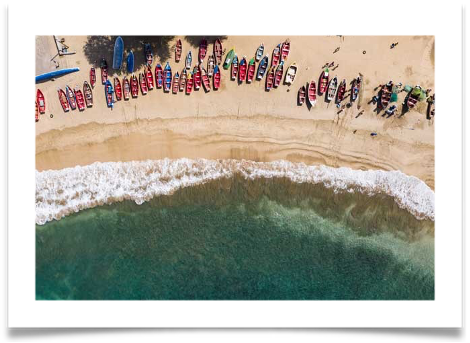
Our Challenge
Cape Verde has a total area of 4.033 Km2, the archipelago consists of 10 islands (9 inhabited), it has an Exclusive Economic Zone (EEZ) with
734.265 Km2 and a coast of about 2.000 km from the continental shelf. This whole Zone has a rich marine ecosystem which allows a sustainable development growth of food supply that can respond to the growing needs of the planet and that contribute to the fight against poverty and value the untapped potential of the oceans and seas.
Tourism: Tourism cntributes directly to 20% to GDP, is the largest sector in the country's economy and the most promising development. Cape Verde receives close to 1 million Tourists annually looking for "Beach Tourism".
Biodiversity: Cape Verde is the 3rd largest turtle spawning site on our planet, is the 11th Global Hotspot for Terrestrial and Marine Biodiversity and is considered one of the 23 Marine Ecoregions of Global Importance for Biodiversity for the high rate of endemic species and home to emblematic species of world importance.
Our Challenge: Clean Beaches - Guarantee the Future of Sustainable Touristic & Coastal Zones Plastic has proven to be one of man's greatest enemies, the benefits it has brought for so many years, are now proving to be a problem for our planet. We all suffer and our country,
being immensely sea, our ecosystem suffers brutally from this evil, since all of it ends up in the ocean. Our Lab has as pillars of work the Blue Economy and the Tourism, and environmental awareness, protection and combating pollution are fundamental for the development of these two pillars.
Garbage cycle: Going through the entire cycle, from production, non-separation and placing in undue places or the lack of where to put them to the process of collecting aggregate waste and treatment, make us aware the scale of the problem! In certain coastal areas, where fishing or tourism, or even both, are the main population income, the probability or ease of licer going to sea is absolute. So, our initial focus is on working consciousness and tools.
Where: The place chosen for the realization of our experience was the beaches of the Capital of our country. Our capital has a population of 120,000 people in which the beaches are the main acraction on weekends and holidays, where the mainly influx are young people and with a strong culture of conviviality and parties on the beach where they cook, drink (alcohol also), leaving the beaches completely jammed with garbage produced. These parties are called karaka.
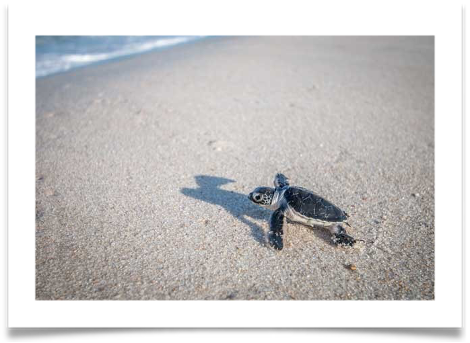
Our Project
What did we do: With the approach of the use of collective intelligence, we stripped ourselves of the pre concepts formed and focused in listen to the people we understand to be the experts in the area.
Who: First, we list our possible project partners, groups who contribute to our problem or who are affected by the problem addressed. We started a series of workshops, in which each one was rethought, and new stakeholders emerged with the learning we had. In all meetings, we made a presentation of what collective intelligence is.
COVID19: Cape Verde did not come out of this crisis unscathed and the pandemic caught us in the first week of our project. This led us, without being able to prepare ourselves, to stay at home, not being able to gather and taking into account the size of our country, very small and very close to each other, it was not easy to adapt to virtual meetings and productivity at a distance.
How we addressed the challenge: However, our goal was not to stick around. Our pre-this phase CI project was not the same project. Ager we have applied the technique, the ideas produced, and the engagement of stakeholders makes us believe that our project will succeed.
Some ideas produced and what we consider to be the actions that we will develop:

a) Collection tools on the beaches: This exercise should be carried out in total harmony with the Municipality. Now, the existing tools are neither sufficient nor effective. The municipality faces serious problems of lack of resources and even solutions that show that they can change the simple behavior of not throwing a plastic cup in the sand or having nowhere to leave all the garbage produced by a Karaka. We intend to identify the best and most effective tools, within a cost structure. This was not mentioned earlier in this note, but the municipality currently performs an incredible post-weekend cleaning job, done by workers who manually clean the beach and the area. But, of course, a large part of this garbage, before this work has already been carried out, will end up in the sea or melt (microplastic) mixing with the sand, impairing the quality of the beach and the fish food that is also our food. But of course, a large part of this garbage, before this work has already been carried out, will end up in the sea or melt (microplastic) mixing with the sand, impairing the quality of the beach and the fish food that is also our food.
b) Mobile application - Nha Praia: Together with the partners in the IC sections, he suggested the idea of developing a mobile application that will have a front office and back office. Being the front office aimed at the citizen, where when using the application you will have information about the beach where you are, safety conditions for using the beach, idenOficaOon of places for dumping garbage, awareness content and in addition, the citizen can contribute with information for the municipality, communicating anomalous situations that the municipality must resolve. The municipality on your side, in the back office, will be able to view the problems sent. The municipality can also give feedback to the citizen, creating trust and greater harmony in this work that belongs to everyone. We also created the concept of beach ambassadors, who are activists or owners of commercial spaces on the beach, who will be the supporters, guards, and representatives of the beaches with citizens in their daily lives and in the continuous work of - clean beaches. Ambassadors will also have access to the back office to be the municipality's work watchmen, but they will also be able to support the municipality in solving problems when possible. c) Area identification: Considering the logic of experimentation and already with the objective of successfully replicating it, the idenOficaOon of the area to apply the project is fundamental. The beaches and coastal areas have particularized and it is necessary to make a real survey of each situation. Here are some of the points we've identified as crucial for surveying: Beach area; Ability of bathers - will allow us to get an idea of the production of garbage; Number of the existing collection means on the beach; Number of existing collection facilities in the vicinity of the area; ForecasOng the number of the collection means required; Collection of temporal satellite images for analysis of change of views indicating pollution levels.
d) Signs on the beaches: We believe that being on signage will support awareness. The signage will report the existence of the app.
Behavior change
We intend to carry out sensibilization campaigns on social networks, in the mass and accessible media such as community radios. We also expect to have the engagement/hiring of social effluents so that the word reaches young people.
New insights and learnings on waste management
What were your top insights/discoveries.
Do not choose the problem of others: During the training, we learned a lot from the intricacies of CI. We begin by realizing that we are not the flavors of the subject, that we need others, and that we must undress from preconceptions and open to learn new ones and undo some. One of the main lessons learned was the concept of Bias and in this, we highlight our decision to decide what the municipality has on its agenda. The municipality has the role of cleaning the city, waste collection, and treatment. But the way he does it and his agenda, it's not the same way we designed for this project or that we created to the extent that we developed the CI with the stakeholders. The municipality does not focus on behavior change, not because it does not interest them, but its work is in the realization of cleaning and awareness they leg on the agenda of other enOOes. UnOl then we have not felt the institutions ment and we run the risk or the need to change what we call project partners.
Lightbulb moments on use of CI
What are your insights and reflections on using CI in this project?
As already addressed the CI made us fall off the pedestal and listen, perceive visions, opinions, know data and think together and differently. The project today is not even close to what it was initially. And mainly it allowed us to surprise with solutions that alone we would not get there. This practice will have to be maintained because things will still have to change a lot. The CI lowers the risk of taking things, such as bias, and thus have less risk of failure. However, the CI also takes its time and often not only wins but is lost. The need to listen, collect information takes time to buy time, but everything has to be in the right measure.
What worked?
No doubt the key so far in this project are volunteers. We have learned a lot from the associations and activists who have brought information that has never come to us except for them who face the problem over another sphere – that is love for the cause, stripped of political influences.
Outlook: what next?
Change of focus: .
Given the situation already addressed here, we face the challenge of having the same focus – to ensure the sustainability of coastal areas and tourism, but we cannot depend on an institution, wanting their agenda to be ours. We are thinking of re-adapting the coastal zones project, with the support of community associations and focusing on young people and behavior change. However, given the municipality's responsibility to keep the city clean, the municipality will continue to be one of our challenges. But we're going to have to take approaches using CI and especially people to generate ideas that work.
How might CI inform future work tackled by your team/country office?
The exercise of CI is a change of attitude towards the day to day, so it is essentially a stripping of the role of a connoisseur to a listener. This opens our chances completely and diminishes our risks. Therefore, CI is already and will continue to be our way of addressing challenges, designing, and exercising our experiments.
Related Content
Resilience, traditional wisdom and data: local learnings for adaptation to climate change .
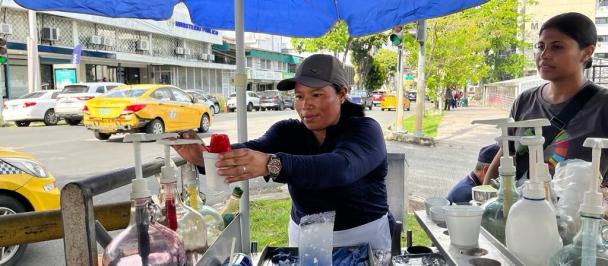
Being Better Observers, to Build a Better UNDP

Creature feature: digging up nature-based solutions from creepy, crawly critters

The secret UNDP Accelerator Labs plan (just between you and me)
The direction of travel for the UNDP Accelerator Labs is now clear: we’re evolving the Network into an open, globally distributed R&D capability for the Sustainab...

A race against time: how are the UNDP Accelerator Labs contributing to the Global Goals?

Tripi Panda
Welcome to the world of paradise Where you will find a lot of unforgettable and attractive things to explore.
Responsible Beach Tourism: How to Protect Our Coastal Paradises
Table of Contents
Introduction
The allure of pristine beaches attracts millions of tourists each year, but this influx can pose threats to fragile coastal ecosystems. This guide explores the importance of responsible beach tourism in preserving these paradises for future generations.
As tourist numbers rise, so do the challenges to coastal ecosystems. Delve into the environmental impact of unchecked tourism and the urgent need to strike a balance between enjoying these scenic locales and safeguarding their ecological health.
This guide aims to equip travelers with knowledge and strategies for responsible beach tourism. By fostering a sense of stewardship, we can ensure that our coastal paradises remain vibrant and sustainable.
Understanding Coastal Ecosystems
The importance of coastal ecosystems.
Explore the unique and vital role coastal ecosystems play in the broader ecological balance. From mangroves to coral reefs, understand why these environments are crucial for biodiversity and ecological resilience.
Biodiversity and Fragile Ecosystems
Dive into the rich biodiversity found in coastal areas and the delicate balance that sustains these ecosystems. Learn about the interconnected web of life that relies on the health of our beaches.
Threats Posed by Irresponsible Tourism
Uncover the various threats posed by irresponsible tourism, from habitat destruction to pollution. Understand the consequences of unchecked human activities on coastal flora and fauna.
The Ecotourism Approach
Definition and principles of ecotourism.
Discover the principles that define ecotourism and how they can be applied to beach destinations. Explore how responsible tourism practices can align with the principles of ecological sustainability and community engagement.
Benefits of Promoting Ecotourism on Beaches
Learn about the advantages of embracing an ecotourism approach. From fostering environmental conservation to supporting local communities, ecotourism presents a sustainable model for enjoying coastal paradises.
Examples of Successful Ecotourism Initiatives
Explore real-world examples of destinations that have successfully implemented ecotourism initiatives. These case studies showcase the positive impact of responsible tourism on both the environment and local economies.
Responsible Travel Planning
Choosing eco-friendly accommodations.
Learn how to select accommodations that prioritize environmental sustainability. From eco-friendly resorts to green hotels, discover options that align with responsible travel practices.
Sustainable Transportation Options
Explore eco-conscious transportation choices that reduce the carbon footprint of your journey. From electric vehicles to public transportation, understand how responsible travel planning begins with getting there.
Minimizing Carbon Footprint During Travel
Delve into strategies for minimizing your carbon footprint while traveling. From offsetting emissions to choosing direct routes, discover ways to make your journey more environmentally friendly.
Beach Conservation Practices
Importance of leave no trace principles.
Understand the significance of Leave No Trace principles in minimizing the impact of tourism on beaches. Learn how simple practices can preserve the beauty of coastal landscapes.
Responsible Waste Management on Beaches
Explore effective waste management practices for beach destinations. From reducing single-use plastics to proper disposal, discover how responsible waste management contributes to coastal conservation.
Protecting Flora and Fauna During Beach Visits
Learn about responsible behavior to protect coastal flora and fauna. From avoiding nesting areas to respecting wildlife habitats, discover how to enjoy the beach without harming its delicate ecosystems.
Engaging with Local Communities
Supporting local economies sustainably.
Explore ways to support local economies without compromising their integrity. Learn about responsible tourism practices that contribute positively to the economic well-being of coastal communities.
Cultural Sensitivity and Respect for Local Traditions
Understand the importance of cultural sensitivity when visiting coastal communities. From understanding local customs to respecting traditions, discover how to engage responsibly with diverse cultures.
Participating in Community-Based Conservation Projects
Learn how tourists can actively participate in community-based conservation projects. From volunteering opportunities to supporting local initiatives, discover ways to give back to the communities you visit.
Educating Tourists
Providing information on local ecosystems.
Discover the significance of educating tourists about the local ecosystems they are visiting. From informational signage to guided tours, explore ways to raise awareness about the importance of coastal environments.
Raising Awareness About the Impact of Tourism
Explore strategies for raising awareness among tourists about the impact of their actions. From educational campaigns to interactive experiences, learn how to foster a sense of responsibility among travelers.
Promoting Responsible Behavior Through Educational Campaigns
Understand the role of educational campaigns in promoting responsible behavior. Explore examples of successful campaigns that have positively influenced tourist behavior in coastal areas.
Sustainable Water Activities
Guidelines for responsible snorkeling and diving.
Explore guidelines for responsible snorkeling and diving. From avoiding damage to coral reefs to choosing operators with ethical practices, learn how to enjoy water activities without harming marine ecosystems.
Impact of Water Sports on Marine Life
Understand the impact of water sports on marine life and how to minimize negative effects. From jet skiing to paddleboarding, explore responsible practices for enjoying water activities.
Choosing Responsible Operators for Water-Based Activities
Discover how selecting responsible operators for water-based activities can contribute to sustainable tourism. Learn about certifications and criteria for identifying operators committed to environmental conservation.
Wildlife Observation and Protection
Responsible approaches to wildlife observation.
Explore responsible approaches to wildlife observation on beaches. From birdwatching to observing marine life, understand how to minimize disturbance to animals and their habitats.
Protecting Nesting Areas and Habitats
Learn about the importance of protecting nesting areas and habitats for coastal wildlife. From sea turtles to shorebirds, discover how responsible tourism practices can contribute to the conservation of vulnerable species.
The Role of Responsible Tourism in Marine Conservation
Understand the role of responsible tourism in marine conservation efforts. Explore initiatives that aim to protect marine environments and promote sustainable practices in coastal areas.
Coastal Clean-Up Initiatives
Participating in beach clean-up efforts.
Learn about the impact of beach clean-up efforts and how tourists can actively participate. Discover organizations and events dedicated to keeping beaches clean and pristine.
Collaborating with Local Organizations
Explore collaborations between tourists and local organizations for effective beach clean-up initiatives. From NGOs to community groups, discover how collective efforts can make a significant difference.
Organizing and Promoting Responsible Tourism Events
Understand the value of organizing and promoting responsible tourism events. From beach clean-up days to educational workshops, explore ways to engage tourists in hands-on conservation activities.
Government and Policy Advocacy
The role of government regulations in responsible tourism.
Explore the role of government regulations in promoting responsible tourism. Learn about policies that safeguard coastal environments and ensure sustainable tourism practices.
Advocating for Sustainable Policies
Understand the importance of advocating for sustainable policies at the governmental level. Explore how grassroots movements and public engagement can influence policy decisions that benefit coastal conservation.
Encouraging Responsible Tourism Through Incentives
Discover how governments can encourage responsible tourism through incentives. From tax breaks for eco-friendly businesses to rewards for sustainable practices, explore policy measures that promote responsibility.
Monitoring and Reporting Irresponsible Practices
The importance of community vigilance.
Understand the role of local communities in monitoring tourism activities. From reporting inappropriate behavior to fostering a culture of responsibility, explore the power of community vigilance.
Reporting Mechanisms for Irresponsible Tourism
Explore effective reporting mechanisms for irresponsible tourism practices. From mobile apps to community hotlines, learn how to report incidents and contribute to maintaining responsible tourism standards.
Encouraging a Collective Responsibility for Coastal Protection
Discover how fostering a sense of collective responsibility can lead to better coastal protection. From tourists to local communities and businesses, explore how everyone plays a role in preserving our coastal paradises.
Case Studies in Responsible Beach Tourism
Successful examples of destinations implementing responsible tourism.
Explore case studies of destinations that have successfully implemented responsible tourism practices. From community engagement to sustainable policies, learn from real-world examples.
Lessons Learned from Sustainable Tourism Initiatives
Discover valuable lessons learned from sustainable tourism initiatives. Understand the challenges faced and the positive outcomes achieved in destinations committed to responsible beach tourism.
Inspiring Stories of Community-Led Conservation Efforts
Be inspired by community-led conservation efforts. Explore stories of locals taking the initiative to protect their coastal paradises and how these efforts have made a lasting impact.
Future Trends in Responsible Beach Tourism
Technological innovations supporting responsible travel.
Explore how technology is playing a role in supporting responsible travel. From eco-friendly travel apps to sustainable transportation solutions, discover the innovations shaping the future of responsible tourism.
Evolving Consumer Preferences Towards Eco-Friendly Options
Understand how evolving consumer preferences are influencing the travel industry. From eco-conscious accommodation choices to demand for responsible tour operators, explore the changing landscape of tourism.
The Role of the Travel Industry in Promoting Sustainability
Discover the role of the travel industry in promoting sustainability. From certifications to corporate social responsibility, explore how the industry is adapting to meet the growing demand for responsible travel.
As we conclude this comprehensive guide, the ongoing need for responsible beach tourism is evident. Balancing the joys of coastal exploration with the imperative to protect these paradises requires a collective commitment to responsible practices.
Encourage a shift towards sustainable travel habits. From individuals to businesses, every stakeholder can contribute to a future where tourism and environmental conservation coexist harmoniously.
Emphasize the collective responsibility we all share in protecting and preserving our coastal paradises. By adopting responsible tourism practices, we can ensure that these breathtaking landscapes remain intact for generations to come.
Leave a Reply Cancel reply
Your email address will not be published. Required fields are marked *
Save my name, email, and website in this browser for the next time I comment.
National Geographic content straight to your inbox—sign up for our popular newsletters here

- PLANET POSSIBLE
6 tips to make your next beach trip more sustainable
Rising tides, beach erosion, and overtourism threaten seaside resorts. Here’s how travelers can support sustainable tourism in coastal destinations.
It’s a tough time to be a beach lover. Rising seas and intensifying storms are wreaking havoc on global shorelines. Vacation homes along North Carolina ’s Outer Banks have fallen into the ocean; Miami Beach has run out of offshore sand to replenish its eroded beaches; and storms in the Caribbean have repeatedly caused billions of dollars of damage.
The world’s 7,000 beachfront resorts operate on the literal front lines of this struggle, and sustainable tourism has become a key tool in fighting back. But beachfront resorts aren’t just reacting to changing shorelines, they’re contributing to them.
In the early 19th century, as seaside resorts became a fixture of upper-class British life, the coal-powered trains used to reach them were already heating up the atmosphere and helping ocean levels inch up. After World War II, emergent middle classes in the United States and Europe turned the beach vacation into a cultural touchstone thanks to disposable income, paid time off, affordable passenger air travel, and vaccines against tropical diseases.

Global travel exploded in the 20th and 21st centuries. In 1950, 25 million people traveled internationally. In 2019, nearly 1.5 billion did . Tourists gravitated to shorelines from Thailand to Hawaii . Their airplane flights alone contributed to most of travel’s growing carbon footprint.
By the late 20th century, paradise needed help. Sustainable tourism emerged, a concept that essentially means adopting practices to reduce negative social, economic, and environmental effects of mass tourism.
As I report in my new book, The Last Resort: A Chronicle of Paradise, Profit, and Peril at the Beach , true sustainability in beach tourism is hard to find. But I did discover places and practices that are responding effectively to the climate crisis.
Travelers can help by choosing, supporting, and being aware of how tourism is impacting shorelines, as well as by reducing their own carbon footprints. Here are six sustainable travel ideas that you should consider before your next escape to paradise.
Sleep away from the beach
High-rise hotels and other concrete structures built right on the beach block the flow of sand, inevitably causing erosion. Once the sand is gone, resort owners face difficult choices: build a seawall to secure the land, continually replenish the beach, or abandon the building.
( Here’s how to spend an eco-friendly day at the beach .)
Resorts should be set back from the beach, ideally composed of several smaller buildings rather than a single immovable one, using materials and techniques that facilitate future relocation and repairs after storms.
Green idea: Nicaraguan law requires that new buildings be set back 164 feet from the high-tide line. This has motivated resorts like Maderas Village to construct cabanas up in the hills amid the trees. The resort used native wood and palm fronds in its construction. This all means better views and breezes for guests, faster recovery from storms, and preservation of the shoreline ecosystem.
Reduce long-haul flights
For a beach vacation involving lengthy air travel, the flight can account for three-quarters of its total carbon footprint. This means no matter how sustainably a remote resort is run, the overall impact of your stay there cannot be considered environmentally friendly. Instead, think about heading to a beach town closer to you (maybe one you can reach by train or other public transit) instead of the Maldives .
In some countries, these decisions may soon be made for travelers. Already, European countries are enacting laws to discourage air travel. France has banned domestic flights where a train could cover the same route in two and a half hours or less, and Austria has banned flights that cost less than 40 euros. The United Kingdom has considered a ban on frequent-flyer programs, which reward travelers for long-haul flights.
Smart and sustainable: Choosing a resort closer to home can make a huge difference for your vacation’s carbon footprint. If you do fly, buying carbon offsets for the trip helps. If you try to avoid flying, you won’t be alone. In Sweden , where “flight-shaming” has become a societal force, passengers in the country’s airports decreased by 4 percent in 2019.
Break your palm tree habit
Palm trees are enduring symbols of beach culture, as likely to be planted on the sands of Cancún as along the Mediterranean in the French Riviera. But coconut palms are native only to parts of the Malay Peninsula and India , and they’re almost useless in creating sustainable shorelines. Their shallow roots do little to curb erosion; they don’t absorb as much carbon as many other species; provide little shade; and require lots of water.
As the coconut palm became ubiquitous at hotels around the world, many native plants disappeared, chief among them the mangroves fronting many tropical beaches ranging from Florida to Central America to South Africa to Fiji . Regrowing mangroves provides ample natural protection for shorelines.
( Learn why Miami is planting mangroves to save its coastline .)
Planting with purpose: West Palm Beach, Florida, now requires parking lots to have trees planted in them , 75 percent of which must be shade-producing, i.e. not palm trees. Some resorts are joining in this shift. The Six Senses chain, for example, is incorporating mangroves into some resort landscaping, notably in Thailand, hoping to help redefine the concept of an ideal beachfront.
Look for resorts that empower locals
It’s hard to understand both the culture and the landscape of a shoreline if you’re an outsider. That’s why, even when foreign resort companies have good intentions, they often misunderstand and mismanage the situation on the ground, and have trouble getting buy-in from the local population. If a new shoreline protection program interferes with local fishermen’s work without understanding their needs and helping them adapt, for example, it is unlikely to ultimately be successful. Locals understand the nuances of such situations and should be empowered to contribute to their solutions.
What’s more, local agency and ownership in the tourism industry ensures that more tourism revenue remain in the local economy, rather than being channeled to foreign companies.

A recycling breakthrough: On Tioman Island off the eastern coast of Malaysia , beach tourism has been an economic driver since the 1990s. Residents were frustrated both by the growing piles of tourists’ beer bottles and by the lack of available sand for mixing concrete in building projects. Both problems were met with a single ingenious solution by a local NGO: a small machine that turns glass bottles into sand.
Ask your ‘eco-resort’ to back up its promises
No law prevents a hotel from labeling itself an eco-resort, even if it doesn’t run sustainably. Where eco-certifications like LEED and Green Key exist , their exorbitant costs exclude many smaller resorts. Slick marketing often convinces guests of a resort’s environmental cred. There’s even a term for this: greenwashing. Don’t let the image fool you.
( Discover how ‘net zero’ hotels could make travel more sustainable .)
Instead, look for small buildings set back from the water, local ownership (or locals in senior positions), windows that open to lessen the need for air conditioning, single-use plastic bans, and menus featuring local food and drink. Some responsible hotels will provide information online about electricity sources and waste management practices.
Beware of golf courses . They guzzle hundreds of thousands of gallons of water every day, often in places with water supply problems, and the fertilizer used to keep them so green wreaks havoc on nearby ocean ecosystems. They obliterate natural vegetation and often displace locals when they are built.
A beach beacon: At the plush Nihi Sumba resort in Indonesia , most guest living and dining areas are outdoors, minimizing the need for air conditioning. All buildings are set well back from the water; natural vegetation remains largely intact; and locals work in a number of higher-level positions. Plus, a new on-property water desalination and bottling plant has eliminated all single-use plastic bottles.
Avoid overdeveloped places
When beach tourism initially arrives, most residents see the financial and social benefits far outweighing the drawbacks. But as development increases and control falls to outsiders, a tipping point comes when local tourism industry is perceived to do more harm than good. In places like Italy ’s Cinque Terre, residents are now trying to reduce tourism , after watching it impede the quality of life and the health of the surrounding environment. Preventing overdevelopment before it happens requires limiting tourism numbers in an official capacity. Local governments can restrict new building permits or ban future construction on the beach altogether.
Travelers can disrupt the overdevelopment cycle by choosing less-trafficked destinations. Instead of Santorini, go to a sleepier Greek isle such as Folegandros. Bypass Costa Rica and head north to Nicaragua. Less swamped destinations also need visitor revenue far more than over-touristed meccas.
Paradise protected: The pristine white-sand beaches, stunning rock formations, and year-round 80-degree temperatures on the Brazilian islands of Fernando de Noronha remain intact thanks to the local government limiting tourism. Only 420 travelers may land on the islands each day, and all revenues fund conservation efforts. The islands’ 3,000 residents have seen their standard of living increase, without suffering the drawbacks of overdevelopment.
Related Topics
- BEACH ACTIVITIES
You May Also Like

10 of the best low-impact U.S. adventures

Looking for a truly remote, off-the-grid adventure? Try Panama.
Free bonus issue.

The essential guide to Switzerland

Some U.S. national parks are trying to go carbon-free. What does that mean for visitors?

Can tourism positively impact climate change in the Indian Ocean?

Microplastics are hidden in your home. Here’s how to avoid them.

10 whimsical ways to experience Scotland
- Environment
- Perpetual Planet
History & Culture
- History & Culture
- History Magazine
- Mind, Body, Wonder
- Paid Content
- Terms of Use
- Privacy Policy
- Your US State Privacy Rights
- Children's Online Privacy Policy
- Interest-Based Ads
- About Nielsen Measurement
- Do Not Sell or Share My Personal Information
- Nat Geo Home
- Attend a Live Event
- Book a Trip
- Inspire Your Kids
- Shop Nat Geo
- Visit the D.C. Museum
- Learn About Our Impact
- Support Our Mission
- Advertise With Us
- Customer Service
- Renew Subscription
- Manage Your Subscription
- Work at Nat Geo
- Sign Up for Our Newsletters
- Contribute to Protect the Planet
Copyright © 1996-2015 National Geographic Society Copyright © 2015-2024 National Geographic Partners, LLC. All rights reserved
Beach restoration and coastal protection to revive tourism and fishing in Saly
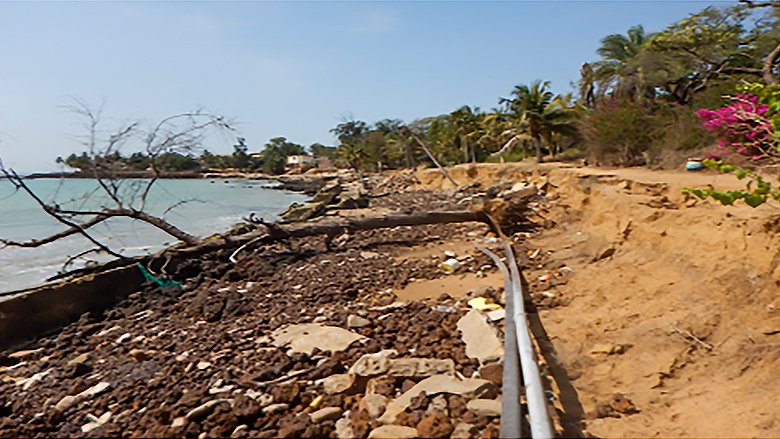
Climate change and extreme weather events had severely eroded Saly’s beaches.
Credit: APIX SA
STORY HIGHLIGHTS
- Severe beach erosion, induced by climate change, had dealt a major blow to Saly, the jewel in Senegal’s tourism crown.
- With the help of the World Bank, a major effort on beach restoration and coastal protection has helped revive Saly’s tourism industry and fishing communities.
- Senegal is particularly vulnerable to rising sea levels and storm surges, with 700 kms of coastline along the Atlantic Ocean and 60% of its population living in coastal areas.
The sun warms the golden sands as waves from the Atlantic Ocean roll in. Children shriek with joy as they swim or play games on the beach. And businesses thrive along and the beachfront from the hundreds of tourists who visit every day.
But it wasn’t always like this for the coastal town of Saly in Senegal. Located about 2 hours driving distance south of the capital of Dakar, Saly’s fortunes as a premier tourist destination suffered as a result of severe beach erosion due to climate change, coupled with the Ebola threat a few years ago and fears of terrorism, leaving this once-bustling beach town in near crisis. Several hotels were forced to close, while others struggled to attract clients. “I saw the beach disappear a little every year. When the (restoration) work started, there was no beach at all,” said Norbert Telisson, Director of the beachfront Neptune Hotel.
With the help of the World Bank, the Government of Senegal is reviving tourism as a priority sector to drive economic growth and contribute to job creation, especially for youth, women, and less skilled workers. One initiative is the Senegal Tourism and Enterprise Development Project , a 5-year, $74 million project financed by the International Development Association (IDA), the World Bank’s fund for assisting the world’s poorest countries. Tourism is one of the most promising sectors for future growth and job creation in Senegal, as recognized in the new national development strategy, Plan Senegal Emergent (PSE). And reversing beach erosion in Saly was critical to revitalizing the tourism sector.
From erosion to restoration
The project helped regain 325,000 sq metres of beach, more than 12 times the initial target of restoring 25,000 sq metres of beach along the coast of Saly. The beach restoration and coastal protection work included the construction of 19 groins and breakwaters to stabilize a 7 km stretch of beach against erosion, combined with sand dredging/recharging to regain beach surface area that was already lost.
The project has also benefitted fishing communities near Saly. Beach protection and restoration work was extended to include two fishing villages, enabling fishermen to once again dock their boats at their villages instead of in the neighboring town of Mbour, over 5 kms away. The project also built structures for fish drying and sale, work largely done by women, as well as equipment storage, and provided cold storage facilities for fresh fish. Along the beach at the two villages, trees were planted, and solar lighting installed. A system of waste management on the restored beaches was also put in place, 10 hectares of mangrove forest were planted at Joal-Fadiouth, and 200 underwater reefs were installed to prevent erosion due to the removal of offshore sand.
The beach protection and restoration work is a prime example of climate resilient infrastructure in coastal and marine tourism. It was the first-of-its-kind coastal protection integrated solution in western Africa, built to withstand extreme weather events without needing major infrastructure maintenance cost for another 20-30 years. The success of the project is already proving to be a model for other coastal areas facing similar challenges in Senegal and beyond. The project design has been replicated in The Gambia, where the Tourism Diversification and Resilience Project , currently underway, aims to revitalize the tourism sector in a country highly dependent on sun-and-sand tourism but extremely vulnerable to sea level rise.
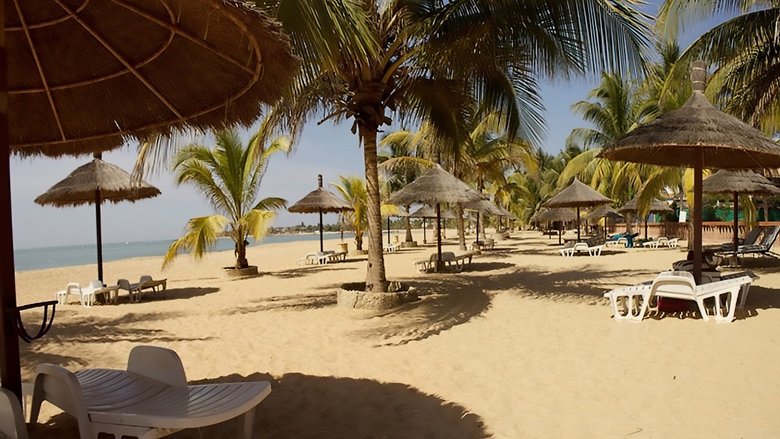
Saly again boasts pristine beaches that have helped bring back tourists and revived the local economy.
Saly’s economic revival
The restoration of Saly’s pristine beaches has brought about a remarkable turnaround to the town’s battered economy. Businesses have recently made investments to upgrade and welcome new tourist arrivals just as the world recovers from the pandemic. The total value of new investments is estimated to exceed $350 million, with knock-on effects on other businesses benefiting from increased tourism and job creation in the Saly area, including restaurants, shops, travel and tour operators, taxis, and banks.
The project also facilitated access to finance to micro, small, and medium enterprises (MSMEs) and supported the government’s plan to establish one-stop-shops, including in Saly, for government-to-business service delivery to facilitate new business registration.
The economic revival has resulted in the preservation of an estimated 15,000 jobs directly and indirectly linked to tourism in Saly, including hundreds of people who live off fishing or fish processing along the coast. More jobs can be expected to be created as new investments materialize. The revival of Saly as a thriving beach resort shows that even in the face of adversity it is possible to create a brighter future for communities and the environment.
“It is such a relief for Saly’s entire population. When we talk about seaside tourism, it is largely thanks to the beach. We welcome the restoration of our beach,” said Ousmane Gueye, Mayor of Saly.
This site uses cookies to optimize functionality and give you the best possible experience. If you continue to navigate this website beyond this page, cookies will be placed on your browser. To learn more about cookies, click here .
Palm Beach engineer gives update on 3 beach renourishment projects for 2025

By this time next year, the South End's eroded dunes will be revitalized, Town Engineer Patricia Strayer says.
Strayer told a coastal protection panel on April 18 that the renourishment project to replenish the dunes in the stretch of coastline from Phipps Ocean Park south to La Bonne Vie Condominiums will begin in January.
While the sand dunes may appear unsightly in their current state, coastal engineering consultant Thomas Pierro told the gathering the dunes were meant to erode to supplement the coastline's beach.
“They’re providing a reserve of sands so that your pool decks don’t fall into the ocean,” said Pierro, principal engineer for Coastal Protection Engineering, which is working with the town on its coastal protection policy.
Strayer and Pierro were panelists atr the event, which was organized by the Citizens’ Association of Palm Beach and hosted at Fire Station 3.
The upcoming project is one of three major beach renourishment efforts expected to begin in 2025, Strayer said.
The U.S. Army Corp of Engineers large-scale dredging of the Palm Beach Inlet also is expected to begin in January, Strayer said. Though a dredging project is currently underway , the upcoming project also will include onshore sand placement as far south as Angler Avenue.
Strayer also highlighted the Midtown Shore Protection Project, the Army Corps' plans to replenish sand on Midtown Beach lost to erosion during the 2022 hurricane season. While she did not announce a start date for the project, officials working with the town told the Shore Protection Board in April that they expect that project to begin near the end of 2025.
Consultant for Town says more South End renourishment projects may be in the horizon
Pierro also noted the success of the town’s coastal protection policy in retaining sand within Palm Beach.
Since 1990, Palm Beach has retained over 5 million cubic yards of sand, he said.
“A standard pickup truck ... might hold two cubic yards of sand comfortably,” said Pierro, “So, when you think about it, this is millions and millions of pickup trucks (worth of sand) that have been retained up on the beach.”
Additionally, he highlighted that since 1990 the town’s beaches have expanded an average of 40 feet in width.
He noted that the town may soon complete its Environmental Impact Statement, which will open up the opportunities for larger renourishment projects along the coastline, from Bellaria Condominium to La Bonne Vie Condo.
The Environmental Impact Statement is required in order to receive state and federal permits authorizing a major project with a potential environmental impact, Pierro said.
The statement, which has gone through significant revisions since it first came before the Town Council in 2011 , would allow Palm Beach to authorize future renourishment projects without the need to go through the state and federal permitting process again, Pierro said.
“Our request is for a 15-year authorization, which is significant. That means multiple projects can be constructed under this authorization,” he said.
“We are really close now ... I feel like I say that quite a bit, but this is really good news,” he said, adding that while the town already has nourishment projects for the area, this authorization would allow the town to put sand directly into the water. “That’s why this process is so critical.”
Diego Diaz Lasa is a journalist at the Palm Beach Daily News , part of the USA TODAY Florida Network. You can reach him at [email protected] .
An official website of the United States government
The .gov means it’s official. Federal government websites often end in .gov or .mil. Before sharing sensitive information, make sure you’re on a federal government site.
The site is secure. The https:// ensures that you are connecting to the official website and that any information you provide is encrypted and transmitted securely.
- Publications
- Account settings
Preview improvements coming to the PMC website in October 2024. Learn More or Try it out now .
- Advanced Search
- Journal List
- Int J Environ Res Public Health

Beach Tourism in Times of COVID-19 Pandemic: Critical Issues, Knowledge Gaps and Research Opportunities
Seweryn zielinski.
1 Department of Hospitality and Tourism Management, Sejong University, 209 Neungdong-ro, Gwangjin-gu, Seoul 05006, Korea
Camilo M. Botero
2 Grupo de Investigación en Sistemas Costeros, Playas Corporacion, Calle 19 8-44, Santa Marta 050022, Colombia; moc.liamg@locsayalp
The strict quarantine measures employed as a response to the COVID-19 pandemic have led the global tourism industry to a complete halt, disrupting the livelihoods of millions. The economic importance of beach tourism for many destinations has led many governments to reopen tourist beaches, as soon as the number of infection cases decreased. The objective of this paper is to provide a scientific basis for understanding the key issues for beach tourism management in these circumstances. These issues include risk perception, environmental considerations directly related to beaches and COVID-19, and management strategies designed to limit the risk of contagion on the beach. The contribution of this paper lies in its interdisciplinary approach to delivering the findings from the latest studies, highly relevant for beach tourism, in psychology, health science, and environmental science (often in preprint and in press format). Particular attention was given to identifying the knowledge gaps evident in the areas of COVID-19 risk perception, with the drivers explaining the risk-taking behavior and the protective strategies employed by beachgoers. Gaps were also found in areas such as the presence of SARS-CoV-2 in bathing waters and the sand, the potential of contaminated sand being a viable route of transmission, and the impact of the use of chemical disinfectants on the marine environment and on bathers. The paper identifies research prospects in these areas, additionally pointing out other questions such as new carrying capacity methods, the opportunity given by COVID-19 in estimation of the impacts of visitation and beach-litter.
1. Introduction
The global spread of the novel coronavirus SARS-CoV-2 causing severe acute respiratory syndrome (COVID-19) has resulted in social, medical and economic shocks that will be felt for years to come. The impact of the outbreak of the COVID-19 has been felt in many spheres, from international disputes among different countries, which further increased tense trading relationships, to economic stagnation or decline resulting in the collapse of many companies and unemployment [ 1 ]. Although, according to modelling research, the strict lockdown policies implemented between 2 and 29 March effectively decreased the spread of the virus averting an estimated 3.1 million deaths in 11 European countries [ 2 ], and prevented 530 million infections in in China, South Korea, Italy, Iran, France, and the US [ 3 ]; it also had devastating effect on economies.
Strict social distancing, temporary travel bans and, in some cases, more extreme quarantine measures such as complete lockdowns have caused economic losses estimated to reach hundreds of billions of dollars. The World Bank estimated under the normal scenario that globally GDP is expected to decline by 2.1% with an estimated decline of 2.5% in developing countries and 1.9% in high-income countries [ 4 ]. They also estimated the decline in global GDP would reach 3.9% under amplified global pandemic scenarios. More pessimistic estimates state that the world economy will shrink by 6% in 2020 [ 5 ]. The prognosis for the tourism sector alone is that there will be a decrease in output of 50–70% [ 2 ] and up to 80% by some estimates [ 6 ]. Because of the economic importance of tourism, the impact of COVID-19 on travel-related industries has been studied in many countries and destinations around the world; e.g., [ 7 , 8 , 9 , 10 , 11 , 12 , 13 ].
It is believed that the recovery from the crisis will not only have the aforementioned direct economic implications, but it will lead to a competition between countries for tourists caused by oversupply and not matching demand [ 14 ]. The countries that are recovering from the lockdown begin to offer incentives to attract tourists; e.g., [ 15 ]. However, a long-term recovery is expected to be slow and in the process of recovery many companies will not be able to survive [ 14 ]. The economic slow-down will also impede fast recovery of the demand for tourism as leisure spending of many families will be affected.
Although tourism is, in most countries, not the main economic driver, it is heavily relied on in some regions [ 16 ]. Tropical countries and those that depend on tourism throughout the year will be the most affected by the industry slowdown [ 17 ]. Empirical studies corroborate this notion. A research carried out on all American countries found that the highest risk category is principally comprised of small countries with expenditures from inbound tourism being much larger than their expenditures from outbound tourism (all of the countries of the Caribbean, with the exception of Haiti and Trinidad and Tobago) [ 9 ].
Other significant implication of COVID-19 can be found in the socio-cultural domain. The pandemic led to tensions as anti-Chinese rhetoric appeared based on China as the place of origin and spread of the virus [ 18 ]. For many tourism destinations around the world, the willingness for tourism to return is countered by the fear of potential virus transmission from tourists felt among local people. In this context, a study of three tourist cities in china (Hong Kong, Guangzhou, and Wuhan) shows that the residents are willing to pay for mitigation of the risk of COVID-19 contagion [ 19 ]. Another study looked at the opposite perspective to find out that 42.3% of tourist to Azores were willing to pay more for safer vacations [ 15 ].
The tourism industry has experienced various disruptive events in the past, none of which had a long-term negative impact on tourism [ 17 ]. Early evidence on the impact of COVID-19 suggests that its scale is much more extensive than with the earlier events. While many of the chain hotels located near beaches can afford a complete halt of activities while providing support (albeit limited) to their employees, the tourism sectors of many tropical developing countries present a greater challenge. A significant proportion of their workforce consists of informal workers [ 20 ] who are highly vulnerable to a sudden loss of income [ 21 ]. A reopening of the tourism industry is, therefore, unavoidable to protect the livelihoods and businesses.
For the many countries that offer “sun, sea and sand” (3S) tourism, beach tourism accounts for a significant amount of their total national revenue [ 22 ]. Given this, governments feel the pressure to reopen beaches at the first signs of a drop in COVID-19 cases and perhaps even sooner, although under strict monitoring and control measures. International travel is already resuming despite many countries still being amid the pandemic [ 23 ]. As restrictions on travel are lifted, the United Nations World Tourism Organization (UNWTO) emphasizes the need for responsibility and for prioritizing safety and security [ 24 ]. This is a crucial moment to strengthen governance through promoting cooperation among local governments, civil society and academia. There is a clear need for the involvement of experts in the development of strategies to respond to crisis events such as COVID-19 [ 23 , 24 , 25 ]. The objective of this paper is to provide a scientific basis for understanding the key issues relevant to beach tourism management in this context. These include tourists’ risk perception, environmental considerations directly related to COVID-19, and management strategies designed to limit the risk of contagion on the beach. The contribution of this paper lies in its interdisciplinary approach to deliver the latest findings (many accessed in their preprint and in-press versions), from psychology and health and environmental sciences that are highly relevant to beach tourism and the challenges presented by COVID-19. Particular attention was given to identifying knowledge gaps evident in the areas of COVID-19 risk perception, with the drivers explaining the risk-taking behavior and the protective strategies employed by beachgoers. Gaps were also found in areas such as presence of SARS-CoV-2 in bathing waters and the sand, the potential of contaminated sand being a viable route of transmission and the impact of the use of chemical disinfectants on the marine environment and on bathers. The paper identifies research prospects in these areas, additionally pointing out other questions, such as new carrying capacity methods, with the opportunity given by COVID-19 in estimation of the impacts of visitation and beach-litter.
An integrative literature review was chosen as an appropriate method that synthesizes secondary data about a wide range of topics directly relevant to tourist beaches. Two principle criteria were employed in the selection of papers to be included in the review. First, the papers had to present the latest empirical findings to provide the most up to date information. For this reason, many of the selected papers were in press format and were yet to be published. Second, only the papers in areas directly related to beach-user safety and the environmental hazard presented by SARS-CoV-2 were considered. Although a number of studies addressed some behavioral and environmental aspects of SARS and MERS in the past, the scale and characteristics of the SARS-CoV-2 transmission are different, which led the authors to believe that the social and environmental responses are different. Hence, this study intended to include principally the studies on COVID-19, integrating the findings from SARS and MERS studies as proxies only when COVID-19 studies were not available. Because researchers are often the ones advising authorities to open/close beaches in many parts of the world, this paper sought to identify relevant research to advance their own studies and knowledge on the most relevant topics.
3. Future Scenarios for Beach Tourism
With the continuing uncertainty about the impact of COVID-19, several possible scenarios are facing the tourism industry. These predictions range between a total collapse of the industry to an optimistic global switch to more sustainable consumption (see, for example, [ 26 , 27 , 28 ]). The most pessimistic scenario assumes that the extreme social perception of epidemiological risks seen in the first months of the pandemic will remain until the development of a reliable vaccine. In this scenario, the fear of infection creates a deep fear of social contact, which indisputably would have a devastating impact on beach tourism. Public fear would lead to a further loss of travel’s appeal and this would, in turn, force the authorities to increase restrictions on the use of beaches. Because of the high level of informality in the sector, this move would increase unemployment and cause consequent socio-economic conflicts because beach tourism would then be concentrated in private facilities considered safe [ 29 ].
At the other end of the spectrum, the optimistic scenario assumes a change in approach to tourism by the government and private sector [ 16 ]. The recovery from COVID-19 is most likely to overlap with the currently taking place, albeit slowly, global transformation of the current economic systems to those that have a net zero carbon footprint (carbon neutrality) [ 23 ]. As noted by Hall et al. [ 30 ], many industry experts thus optimistically assume that the pandemic presents a transformative moment or opportunity for a new opening leading to quicker adaptation of more sustainable environmental solutions [ 30 ]. The assumption that new beach tourism will emerge also assumes that a greater social appreciation of the natural and cultural value of beaches will emerge—an awareness reinforced by a collective reflection on the pandemic.
Many scientists and industry professionals see in the crisis a global opportunity to rethink old ways and reset the industry [ 27 , 28 ]. However, the early evidence shows that this is unlikely to be the case and that a return to business as usual [ 26 ] or possibly even increased growth to overcompensate for losses, is the most likely scenario [ 17 , 28 ]. Under this scenario, experts and scholars alike predict a domestic tourism recovery in the short term and a recovery of international tourism in the long term [ 28 ]. The shift to a carbon-neutral economy and the implementation of more sustainable practices is also unlikely because of the priority that will be given by governments and companies to the recovery from economic loss [ 13 ].
Several scholars and industry specialists have also predicted that demand for international beach tourism will be significantly reduced, but that this drop will be partially offset by domestic tourism [ 29 ] which is usually the first to recover after crisis [ 30 ]. Experts suggest that less accessible and isolated destinations will be perceived as having a lower risk of contagion and consequently will be preferred [ 25 , 31 ]. People are also more likely to reduce personal mobility, choosing their local environments that can meet their various aspirations [ 16 , 32 ]. They are likely to travel independently or in small groups to recover from self-isolation [ 25 ] and to avoid crowded places [ 33 ]. Beach users are likely to arrive earlier in the morning or later in the evening to avoid congestion and human contact [ 29 ].
It is still too early to confirm or reject the above predictions. Early evidence suggests that the pessimistic scenario is, at least partially, unlikely. The result of an online survey of 4000 respondents from 140 countries carried out by Bloom Consulting [ 31 ] states that 35 and 45%, respectively, declared that they would not travel unless the virus is either controlled or fully eradicated. The remaining 65% were willing to travel. The optimistic scenario seems equally unlikely. A transformation in tourism is possible only through changes in both the demand and supply side of the market [ 26 ]. Some beach destinations might, in the long term, make a switch to more sustainable consumption and some consumers might reassess their priorities. At present, however, news articles indicate a complete lack of change in the approach of tourists and the industry in some of the countries most affected by the COVID-19 crisis, such as the United States of America, Spain, Portugal, Canada, Brazil, and the United Kingdom (UK) [ 34 , 35 , 36 , 37 , 38 ]. This is not only the case with respect to domestic tourism. In Spain, local governments in various famous beach destinations had to close their beaches because of the arrival of tourists from the UK [ 39 ]. Because of the long period of isolation and warm summer weather in the northern hemisphere, thousands of people have ignored social distancing and government recommendations and have flocked to local beaches in great numbers [ 38 ].
4. Understanding Beachgoer Risk Perception
The decisions made by tourists about their chosen activities and travel destinations are influenced by their perceptions of safety and security [ 40 ]. Risk perception is a subjective psychological construct that is influenced by cognitive factors (knowledge and understanding of risks), emotional and experiential factors (personal experience), and social, cultural, and individual factors such as gender, education, and ideology [ 41 , 42 , 43 , 44 ]. In general terms, studies show that the more risk people perceive the less likely they are to visit public places such as beaches and the more likely they are to cooperate with government recommendations and to adopt health-protective behaviors [ 42 , 45 , 46 , 47 , 48 ].
As of the time of writing, various studies had been published on the perception of the risk of contagion by COVID-19. Dryhurst et al. [ 42 ] provided an international analysis of COVID-19 risk perception amongst 6991 individuals surveyed across ten different countries. The determinants of an individual’s risk perception were their experience with the virus, social amplification (hearing about the virus from friends and family), pro-sociality, individualistic worldviews, self and collective efficacy, trust, and personal knowledge. Other researchers identified the voluntariness of taking the risk to be another factor that negatively affects the perception of risk [ 41 ].
Wise et al. [ 48 ] surveyed 1591 individuals in the United States of America (USA). The results show that in the early stage of the pandemic subjects perceived their risk of being infected as relatively high and as even higher five days later when the number of infections in the country increased. Interestingly, people rated the average person in the USA as having the highest risk of infection, but themselves as having the lowest risk (optimism bias). Similar results were obtained by Gerhold [ 49 ] in the UK and Kuper-Smith [ 50 ] and the UK, USA and Germany. In both cases, those who reported lower-perceived risk also reported low engagement in protective behaviors and information seeking. De Bruin and Bennett [ 45 ] explored the perception of the likelihood of infection and subsequently fatality and found that the median perception of the risk was higher in the case of infection than in case of infection fatality. This was consistent with the results of a similar study by Gerhold [ 49 ]. The study also confirmed the finding observed by Wise et al. [ 48 ] that the perception of risk increased with time as a result of increases in the number of infections and/or information campaigns.
The above-mentioned studies suggest that besides the cultural factors, beachgoers are likely to underestimate their risk. This may be due to the voluntary nature of taking the risk, optimism bias, poor social amplification, lack of reliable information or having no direct experience with the virus. Although the perception of risk of infection is relatively high among the general population, the perceived risk of fatality is much lower, especially among younger people who are most likely to visit a beach. This is consistent with studies on adolescent risk-taking (e.g., [ 51 , 52 ]). Because closed indoor spaces are perceived to present the highest risk for virus transmission, while outdoor places are perceived to be safer [ 49 ], beaches are likely to be considered safe.
Studies also show that when the number of positive cases and fatalities decreases, the perception of risk may also decrease. The perception of risk is also likely to decrease in the absence of significant changes in the number of infected cases. As explained by habituated action theory, this takes place where there has been prolonged exposure to the risk without a negative outcome [ 53 , 54 ]. On the contrary, when the situation gets worse, the perception of risk may increase [ 48 , 49 ]. This would explain the mass beach visitation in the UK and other locations. When the rate of coronavirus deaths and new infections fell considerably and the lockdown restrictions were eased, the risk perception among beachgoers dropped dramatically “as if the last three months of fear and caution over the coronavirus vanished overnight” [ 38 ]. The most concerning for beach management in times of pandemic is the consistency of studies confirming a positive relationship between risk perception and the likelihood of engaging in preventive measures. If people who go to beaches do not perceive the risk, they are also likely to ignore preventive measures. This then further entrenches a general community perception that the activity is low-risk—a result explained by social action theory [ 52 ]. The need for management strategies that are effective and controllable is thus indisputable.
5. Environmental Considerations
This section of the paper is dedicated to environmental considerations brought to light by COVID-19. There have been several unexpected environmental impacts that might have dire consequences on beachgoer safety and entire beach tourism destinations. The sudden desertion of tourist beaches has had a short-term positive environmental impact on coastal environments that have had time to recover from human pressures [ 55 , 56 , 57 ]. The resulting visual and acoustic qualities of undisturbed coasts have been noted in the media (see, for example, [ 58 , 59 ]) and by early empirical research papers that confirmed these observations [ 57 ]. It is currently unknown whether these changes are substantial and long-term.
Besides the obvious temporal consequences, the pandemic also brought about various threats. Because of the high level of risk perceived by some individuals, it is safe to assume that the number of visitors to rural and natural beaches—which are usually less congested—will rise. Even a relatively small increase in visitors to beaches that are highly susceptible to anthropic pressures will have a greater environmental impact than a similar increase on urban beaches [ 60 ]. The increased visitation rate may cause not only an overload of scarce public facilities on these less visited beaches but may also encourage the construction of public infrastructure and facilities to cope with the demand and to ensure visitors’ safety (this might include parking, mechanical cleaning, and lifeguarding). These changes would have a significant environmental impact [ 61 , 62 ].
The potential impact wastewaters being infected by SARS-CoV-2 is highly relevant in the developing country context [ 63 ]. Despite the hostile conditions of the marine environment, viruses can maintain their infectious capacity in the water for prolonged periods, reaching the aquatic environment via sewage discharges [ 64 , 65 ]. They can also remain on solid particles suspended in the water column or on sand particles on the beach [ 66 ]. According to a recent review study by Kitajima et al. [ 67 ], an increasing number of studies have demonstrated the presence of SARS-CoV-2 in stool from patients confirmed as having COVID-19. This discovery indicates yet another route of contagion—fecal transmission. Preliminary results confirmed the presence of the virus in raw sewage [ 68 , 69 , 70 , 71 ]. The lack of treatment of domestic sewage and the discharge of rainwater directly or indirectly through rivers to the sea is a serious threat to the people utilizing that water in many coastal locations [ 72 , 73 ]. These people may get infected through either ingestion, inhalation, or dermal contact. Most bathing water monitoring programs include an evaluation of the concentration levels of microorganisms from fecal pollution (enterococcus and E. coli ) [ 66 ]. On many tourist beaches, these levels surpass the maximum permitted thresholds after rainy days when rainwaters mixed with untreated or partially treated sewage enter the sea [ 74 , 75 ]. Despite the bacteriological monitoring carried out by local authorities on many tourist beaches, there are currently no protocols for the detection of SARS-CoV-2 in the water or sand on a beach.
The second environmental consideration that should be closely analyzed by local authorities and beach managers is the impact of the chemicals that are used in huge quantities to disinfect public spaces [ 76 ]. The conventionally used quaternary ammonium surfactants and their derivatives are capable of inactivating the SARS-CoV-2 virus [ 77 ]. However, these substances also affect the marine organisms when transported to the ocean via sewage and rainwater drainage systems [ 78 ]. They can cause an ecotoxicological impact that could reduce the populations of some animal groups (e.g., algae, fish, mollusks, barnacles, rotifers, starfish, shrimp and others) [ 79 , 80 ]. Some of these organisms are responsible for removing significant amounts of organic matter, as well as chemical and biological pollutants [ 77 ]. This would harm the environmental quality of beaches, which is a critical point in attracting visitors [ 60 ].
Finally, there is an issue of increased usage of protective gear such as gloves and masks that are often inappropriately disposed of [ 56 , 81 ]. These items when discarded can be transported to the sea by wind or rainwater either directly or indirectly through rivers, which are considered one of the main sources of beach-litter [ 82 , 83 ]. In coastal areas without good rainwater treatment, these potentially contaminated items are likely to end up in the sea and/or be washed out on beaches presenting a hazard to marine organisms such as crustaceans, mollusks, birds, turtles and fish that ingest microplastics from degraded synthetic material [ 84 ]. The presence of these items has already been reported in different locations on the planet [ 85 , 86 , 87 ]. However, it should be also noted that the absence of beachgoers, one of the main sources of litter on beaches [ 88 , 89 ], has a contrary effect. An evaluation carried out on Brazilian beaches showed lower than usual concentrations of plastics and other waste typically found in the dry strip of sand where most bathers are usually set up [ 90 ]. Similar findings were presented by Ormaza-González and Castro-Rodas [ 57 ] in the case of Ecuadorian beaches.
6. Strategies to Deal with COVID-19 on Tourist Beaches
Integrated beach management must address not only the immediate challenges of ensuring the safety of beachgoers and the appropriate environmental conditions to reopen beaches, but should also include long-term strategies that respond to the uncertainties posed by a prolonged pandemic ( Table 1 ). It should be recognized that the most appropriate strategies will differ depending on the beach type (natural, urbanized or resort) and local conditions [ 91 ]. Because the paper focuses on issues related to COVID-19, many general beach management strategies are not discussed.
Management strategies to deal with COVID-19 on beaches.
Currently, several interesting, albeit often unfeasible, ideas to ensure beach-user safety are circulating online. Beach booths made of plexiglass isolating beach-user groups from each other were reported to have made an appearance in Santorini, Greece [ 92 ] and to have been considered on various Italian beaches [ 93 ]. Although acrylic sheets withstand exposure to high levels of UV light, saltwater spray, and significant temperature changes without shattering, fogging or losing transparency, the idea is unrealistic. The booths are costly, reach unbearably high temperatures inside even with an open roof, and their daily cleaning requires considerable effort and chemicals. On the other hand, some more realistic voluntary measures have been proposed to deal with the requirement of social distancing on a beach. The most common is social distancing tapes or circle templates that are used to mark off an area around beach users [ 94 ] which are being sold on some beaches in Spain [ 95 ].
6.1. General Beach Visitor Management Strategies
Individuals who have the COVID-19 virus may be presymptomatic or asymptomatic. To avoid transmission in these cases, the bulk of management strategies center on ensuring social distancing. At most beaches in the world that still allow beach visitation, toilets have been closed to minimize the risk of skin contact with potentially infected surfaces. Because beach users tend to concentrate in areas with a wide range of facilities such as drink or snack stalls, kiosks, showers, etc., their closure or separation is recommended. In urban and resort beaches, social distancing can be achieved through a greater separation of deckchairs, parasols, beach huts or tents for rent. The beaches that use wooden catwalks for visitors’ movement on the beach should provide two lanes separated by at least a 2-m gap to limit close contact with those passing in opposite directions. Finally, when full protective measures cannot be implemented on the entire beach, a zoning system may be considered, separate areas for different user groups with stricter measures only in areas designated for high-risk groups such as the elderly.
Commonly employed in the hospitality sector are strategies related to service delivery such as the separation of tables, provision of mostly outdoor dining spaces, and requiring online reservations. Chinese tourists who experienced the 2003 SARS epidemic also employed voluntary measures such as ordering delivery or takeout food [ 25 ], although this can also increase waste generation. Finally, local governments can opt for strategies centered on spreading tourists across different locations by promoting beach alternatives or developed beaches.
6.2. General Beach Resort Management Strategies
In many places around the world, the beach product is inseparably related with beach resort operations. According to the preliminary findings of a longitudinal study by Gursoy and Chi [ 96 ], hotels are likely to see a slower post-pandemic recovery due to a reluctant attitude of potential customers (over 50% of respondents) to dine and stay in hotels. However, as the industry is recovering, it is important to highlight a number of strategies that are applicable to these indoor spaces. Because hotels and tourism accommodations are equally susceptible to contagion any indoor space visited by large numbers of people and a high degree of interaction, besides the general prevention measures that are usually compulsory for all hotels such as frequent hand washing, physical distancing, wearing a mask and frequent disinfection procedures [ 97 , 98 ], the response from hotel managers should include a set of more specific strategies.
Based on the experiences from the SARS pandemic, scholars point out the value of having a disaster management plan with standard operating procedures (SOPs) that can greatly enhance the effectiveness of the response [ 99 , 100 , 101 ]. Existing SOPs that do not include epidemiological risk should be adjusted and implemented in accordance with the recommendations of local and national public health authorities with the aim to prevent cases, effectively manage cases, and mitigate impact among clients and staff, including cleaning and disinfection of rooms occupied by ill persons [ 98 , 102 ]. It is advisable to keep a logbook of actions and measures carried out that can be evaluated and used to further improve the SOP [ 100 ].
Because the reception desk staff belong to the highest risk of infection group, if possible, staff members should not be older or with underlying health conditions. Reception desk employees should be equipped with disinfectant/wipes for surface cleaning, disposable gloves and apron, full-length long-sleeved gown and biohazard disposable waste bag [ 102 ]. The general recommendations of the WHO [ 102 ] for hotels state that they pay a special attention to disinfecting surfaces that are frequently touched such as handrails, elevator buttons, handles, doorknobs, computer keyboards, key cards, writing utensils, toilets, handwashing basins, baths, etc. [ 98 ]. Guests should avoid handling food at the buffets and special care should be given to the disinfection of the commonly used surfaces such as drink dispensers after each use. The concentration of water disinfectants in swimming pools should be kept at the upper recommended limits. The WHO also recommends to have a maximum of four persons for 10 square meters and separation of sitting guests of at least 1 m. Consideration should be given to closing the recreational areas for children, as well as other public areas and facilities such as gyms [ 100 ].
Resorts should provide guidelines to the staff on how they should communicate the action plan to guests. Informative posters and leaflets can amplify the key messages among guests and staff. Communication strategies not only increase the awareness about the risk, but also decrease their fear and increase confidence among visitors and staff members [ 103 , 104 ]. Moreover, the resort staff should undergo the training required for understanding and adopting the measures that could protect their health and that of others [ 98 , 100 , 102 ]. It is especially important because many standard procedures that has been followed for years are likely to change (cleaning, washing, operating cafeteria, communication with guests, etc.).
Technology is seen as an alternative solution to deal with the actual and perceived risk of the virus contagion in the hotel industry [ 96 , 97 , 100 , 103 ]. The internet-based communication technologies are currently used in hotels around the world at the management level for work-related communication and customer interaction with hotel staff and facilities (self-check-in, voice control of room service, etc.) [ 100 ]. However, the implementation of more advanced technologies such as infrared scanners, app-based keyless doors, touchless elevators, digital menus, automatic water/soap/drink dispensers, kiosk check-in machines, robot cleaning systems, electrostatic sprayers, ultraviolet-light technology, and advanced heating, ventilation, and air conditioning (HVAC) systems [ 96 , 97 , 100 , 103 ], dependent on the “good will” of hotel owners and the availability of appropriate resources [ 97 ]. According to a recent study, both restaurant (64.71%) and hotel (70.42%) customers indeed believe that these technologies will be necessary to minimize human-to-human contact, and many of them (30–40%) are even willing to pay more for increased safety precautions [ 105 ]. Other empirical studies confirm this notion stating that the technology-mediated solutions lead to lower levels of perceived health risk among hotel visitors [ 103 ].
6.3. Environmental Management Strategies
The absence of data about the possibility of SARS-CoV-2 contagion through seawater, and a lack of protocols for the detection of viruses in the water and sand on a beach means that a precautionary approach is recommended. The established relationship between fecal bacteria and viruses, including SARS-CoV-2, requires that bathing should be banned on beaches exposed to significant discharges of untreated sewage and rainwater runoff. On urban beaches that record high levels of fecal contamination after rainfalls, a no-bathing period of at least 72 h is recommended after rain [ 64 ]. In the absence of water-quality monitoring, access to the sea should be closed until more information about the virus and fecal contamination is available.
In the early stage of the pandemic, when a timely response was vital, public authorities scrambled to secure any type of disinfectant substances. There is evidence, albeit anecdotal, of the use of highly toxic substances such as sodium hypochlorite (bleach) to disinfect public beaches [ 106 ]. The only beach cleaning methods that are recommended are the aeration of sand to allow the UV light to act as a natural disinfectant [ 107 ] or the adding of ozone to mechanical beach cleaners to protect the sand from bacteria and viruses [ 108 ]. In terms of the disinfection of other public spaces, public authorities should carefully review the usage of substances based on quaternary ammonium surfactants that can enter the sea through rainwater runoff.

6.4. Carrying Capacity
The concept of beach carrying capacity (BCC) has become particularly relevant. Commonly criticized as imprecise to calculate and hard to control, it is still one the most important tools for visitor management in beach environments [ 109 ]. BCC allows authorities to determine the maximum beach load based on user densities or availability of parking spaces. The BCC is especially important as it allows a calculation of the space, measured in square meters, required by visitors for their psychological comfort (psychological carrying capacity).
The BCC concept has been criticized as difficult to implement due to limits on the ability of authorities to control the number of visitors on multiple-access public beaches. The suppression of parking spaces has been the most common strategy to limit capacity [ 109 ]. However, due to the restrictions posed by the COVID-19 pandemic, stricter control measures are not only advisable but also widely acceptable. For control over the number of visitors a “one entrance/exit” strategy is recommended, along with measures to create separate lanes of people and limit close contact between people passing in opposite directions. When establishing the maximum user density using BCC factors to consider are the usable beach area, visitors’ spatial patterns (visitors tend to use the first 30m from the sea) [ 110 ], and social groupings (social “bubbles” requires less space overall). Once established, the BCC can be managed through a reservation system, as has been proposed in countries such as France and Spain, to control the number of visitors to their mostly urban and resort beaches [ 111 , 112 ]. The alternative to reservations is a tracking system such as that implemented in Belgium that indicates the density of visitors on specific beaches and reroutes them to less populated areas [ 111 ].
The social distancing of visitors on the beach can be controlled by implementing roped-off grids varying in the area and based on party size [ 112 ] or through the voluntary measures such as distancing tapes described earlier. Enforced separation of user groups may not be required as long as the total number of visitors on a beach is controlled and there is enough space; even before COVID-19, beachgoers usually voluntarily practiced social distancing through crowd-avoidance self-regulation [ 110 ]. Social carrying capacity studies on beaches established that, depending on the beach type, beachgoers require an area of between 8 m 2 and 22 m 2 per user for a pleasant experience [ 110 , 113 , 114 ]. The lower threshold, applied mostly to urban beaches, is likely to increase given that psychological comfort depends on a beach user’s level of perceived risk in different stages of the pandemic. When calculating the BCC, it is thus advisable to consider both the physical distancing and psychological comfort.
6.5. Information and Education
Protection motivation theory states that engagement in protective measures is significantly influenced by high levels of perceived risk [ 45 , 46 ]. Because perceived risk is influenced by the knowledge and understanding of risks by the people who perceive it and on social amplification [ 42 ], obtaining information from a variety of sources, such as the government and media, is of crucial importance [ 47 ]. Public authorities have to work closely with media outlets to share knowledge and build confidence to reduce fear [ 41 ]. Transparency about scientific uncertainty does not undermine public trust [ 115 ], hence “clear communication of risk could aid the development of accurate risk perception, in turn facilitating engagement in protective behaviours” [ 48 ] (p. 10). The provision on the beach of information about the virus itself and of the measures taken by beach management to ensure safety are two strategies designed to regaining visitor confidence. Signage with information on the risk of contagion and recommendations for appropriate behavior, including the beach’s carrying capacity and allowed beach-user density (if controlled), should be displayed. Risk perception studies show that there is a subset of individuals who do not seek out information and can only be targeted by direct outreach methods such as emergency alerts on cellphones [ 48 ].
6.6. Beach Management Organization
The objective of a beach management organization (BMO) is to regulate the interrelations between different elements in a coastal system intended to achieve a balance between economic activities and the environmental health of the beach [ 116 ]. A BMO assumes the central decision-making role, coordinating the often conflicting interests of stakeholders and mediating conflicts when necessary. In a way, BMOs are similar to destination management organizations (DMOs), but because they operate on a much smaller scale they are more focused on beach management and conflict resolution and much less on marketing and destination-level tourism planning. The integration of institutional and private stakeholders into a BMO allows for greater coordination of decisions about crisis response strategies that are both suitable and as fair as possible to a variety of beach stakeholders. These strategies include the implementation of a rotation system for the operation of beach microenterprises (e.g., food stalls, peddlers, and equipment rentals) ensuring an equal opportunity to earn at least a partial income. The benefit of the active involvement by a variety of stakeholders and local communities is that they are all then more likely to assume personal and collective responsibility for applying response measures [ 117 ].
BMOs, especially on certified beaches, can also exercise their institutional power by pressuring government agencies to provide funds and to take specific actions [ 118 ] to ensure the best possible response to the pandemic—including such measures as providing protective gear, hiring more staff, and involving volunteers. Other relevant advantages of BMOs is their ability to generate cooperative relationships between small and medium beach enterprises and beach peddlers to take advantages of economies of scale in purchasing goods and protective gear and thus maximize their potential income [ 29 ].
7. Knowledge Gaps and Research Needs
In times of crisis, resources are allocated to new priorities and research teams around the world scramble to develop science-based solutions to ensure that the most effective measures are taken. The coronavirus pandemic introduced many new and complex problems for which the scientific community has no answers. Scholars have already called for interdisciplinary approaches to deliver scientifically grounded feasible solutions [ 25 ] that would increase the safety of citizens and at the same time provide a viable way to engage in familiar tourism and leisure activities. In the context of beach tourism, there are many gaps in knowledge that need to be addressed to ensure a safe beach experience. This section focuses on these gaps in the hopes of sparking interest within the scientific community to research in a safe and precautious manner using such methods as online surveys and scientific webinars.
COVID-19 risk-perception studies have confirmed that individuals who perceive less risk are less likely to cooperate with government recommendations and to adopt protective measures [ 25 , 42 , 45 , 46 , 47 ]. Given the evidence that beaches still attract thousands of visitors even in countries that are experiencing increasing COVID-19 cases, there is a need to investigate risk perceptions, with the drivers explaining the risk-taking behavior and the protective strategies employed by beachgoers. Researchers may want to understand why a subset of individuals do not engage in seeking information and protective measures to develop direct outreach methods on beaches.
In terms of environmental considerations, beach safety must include investigating the presence of SARS-CoV-2 in bathing waters and the sand, especially on those beaches that receive untreated or partially treated domestic sewage. On the other hand, because viruses are known to have the ability to survive for extended periods on sandy beaches under conditions of low light and high humidity, there is a need to estimate the lifespan of SARS-CoV-2 in beach-type conditions and to consider the efficiency of sand aeration and UV solar radiation in deactivating the virus. Currently, there is still no information on the ability of the virus to remain viable in seawater, although early evidence from Spain indicates this presents a low risk [ 119 ]. Likewise, no studies have been published about contaminated sand being a potential route of transmission. Research gaps are also evident in the field of beach ecotoxicology [ 76 ]. Further studies are required on the impact of the use of chemical disinfectants and possibly safer biological alternatives on the marine environment and on bathers who are exposed.
Given the recent media coverage, it seems that many coastal ecosystems have recovered quickly, within a few months of the halt of tourism activities. Whether this recovery has been substantial remains unknown. Before the pandemic, the possibility of investigating the resilience of many intensively used beaches was very limited. There is now also an opportunity to estimate the impact of visitation by comparing the environmental conditions of partially recovered beaches (the baseline) with their post-pandemic condition when visitation resumes. A very similar opportunity is presented in the field of beach-litter assessment. The proportion of marine litter that can be attributed specifically to beach users has been very difficult to estimate as there are many possible litter sources [ 120 ]. There is a considerable amount of data regarding litter on extensively used tourist beaches collected during the summer high season that cannot easily be compared with data collected in the low season when environmental conditions are very different [ 121 ]. The existing summer data can, however, be compared with new data collected on beaches that, because of COVID-19, are relatively empty during the same period. Additionally, the pandemic’s impact on the quantity of marine litter washing up on beaches can be estimated.
The beach carrying capacity tool also requires further research attention as it remains the primary means of calculating the maximum allowed number of beach users at any given time. The conditions presented by COVID-19 require a re-evaluation of the tool. Health and safety recommendations and environmental factors need to be taken into consideration. Now, more than ever, the estimation of a beach’s social carrying capacity (SCC) is of the utmost importance as it takes into account the beach users’ perceptions of risk as relevant to their perceived safety and hence the overall quality of the experience. There is also an evident need for research into the addition of a new component to the carrying capacity calculation that is centered on the epidemiological risk posed by COVID-19. The epidemiological carrying capacity (ECC) should consider the space required by each beach-user group to limit contagion but should also consider the issue of beach access. Provision should be made for well-spaced one-way entrance, exit and walking paths to limit the chance of people coming into close contact with one another as they move about. Additionally, given the propagation characteristics of SARS-CoV-2, the calculation of the ECC at a beach should consider social groupings or bubbles rather than only individual users. The visitor part size could be calculated by analyzing data from the reservation systems that are becoming a popular means for controlling visitor numbers. The grid system being implemented on many beaches should take into account both the ECC and the SCC, as these components are likely to determine the final carrying capacity—except perhaps in the case of highly natural or protected beaches. Further research is required on visitor-flow patterns and SARS-CoV-2 transmission characteristics to guide new methods for calculating beach carrying capacity.
8. Limitations of the Research
The research has two major limitations that stem from the fact that the SARS-CoV-2 pandemic is still a recent phenomenon and the body of relevant research, although growing fast, is still limited. Therefore, the findings from a limited number of studies may not be conclusive and contradictory results from future studies can be expected. Although the majority of the topics addressed in this paper and not new and were addressed previously in relation to the SARS and MERS pandemics, the scale and characteristics of SARS-CoV-2 transmission are different, which is likely to produce different social and environmental responses. For this reason, the studies carried out on SARS and MERS in the past that were used in this research as proxies in the absence of SARS-CoV-2 research may not be completely accurate.
9. Conclusions
The SARS-CoV-2 epidemic has already had unprecedented social consequences causing economic losses estimated to reach hundreds of billions of dollars. Of the possible future scenarios, the evidence suggests that a sustainable reopening of the tourism industry is unlikely. Rather, and more pessimistically, it seems inevitable that the priority given to economic recovery will lead to the more pessimistic business as usual scenario. Many governments have already decided to reopen tourist beaches, even without a drop in COVID-19 levels. Considering the economic importance of 3S tourism for many destinations around the globe, governments, civil society and academia alike must act to develop and implement viable solutions to face the crisis. In the interests of more quickly answering the key pandemic-related questions facing beach tourism destinations, this paper has focused on the latest findings from various disciplines highly relevant to beach tourism, pointing out the knowledge gaps and research opportunities.
The studies of COVID-19 risk perception demonstrated that there is a clear relationship between an individual’s likelihood of cooperating with government recommendations and their adopting health-protective behaviors. Outside of cultural factors, beachgoers are likely to underestimate their real personal risk because of the voluntary nature of taking the risk, optimism bias, poor social amplification, a lack of reliable information, and no direct experience with the virus. These findings are especially relevant in the context of public spaces where the risk of contagion is high.
The pandemic has also highlighted various, in some cases unexpected, environmental threats, impacts and concerns. These include the impact of the increased number of visitors to rural and natural beaches, the contamination of bathing waters by the virus, the lifespan of the virus on the sand, the impact of chemicals used for disinfection, and the pollution caused by discarded protective gear.
Various strategies can be used to deal with these threats including imposing a bathing ban on beaches exposed to significant discharges of untreated sewage and rainwater runoff, reviewing the use of certain disinfectants, and using aeration and sand ozonation techniques. There is a range of strategies for beach-user safety centered on ensuring the physical distancing of visitors and management of their risk perception. These include closure or separation of certain facilities, providing new service delivery options, using online reservation systems, promoting alternatives to the beach, implementing a strict carrying capacity, providing information to manage risk perception, and establishing a beach management organization. Though some of these strategies have proven to be effective, many have never been implemented and tested in COVID-19 conditions.
The future lines of research should be focused on investigating risk perceptions specifically in the context of COVID-19 as it has proven to have different transmission rates and hence perceive risk from the previous viruses (SARS, MERS). The drivers explaining the risk-taking behavior, protective strategies employed by beachgoers, and measures to develop direct outreach methods on beaches also require investigation. In relation to the environmental considerations, the presence of SARS-CoV-2 in bathing waters and the sand and the potential of contaminated sand being a viable route of transmission, as well the impact of the use of chemical SARS-CoV-2 disinfectants on the marine environment and on exposed bathers, require further investigation. Finally, studies that adapt the concept of carrying capacity to meet the safety requirements are warranted. With COVID-19 becoming a new normal, researchers have to act quickly to confront its challenges.
Author Contributions
Conceptualization, S.Z.; methodology, S.Z.; investigation, S.Z. and C.M.B.; writing—original draft preparation, S.Z.; writing—review and editing, S.Z. and C.M.B. All authors have read and agreed to the published version of the manuscript.
This work was supported by the faculty research fund of Sejong University in 2020.
Conflicts of Interest
The authors declare no conflict of interest.
- Share full article
Advertisement
Supported by
Greece Announces New Plan to Protect Some of Its Pristine Beaches
The government has pledged to crack down on rapid development, and on seaside businesses seeking to take advantage of a tourist boom. But some residents and conservationists are unimpressed.

By Niki Kitsantonis
Reporting from Athens
The Greek government on Friday published a list of 198 “untrodden beaches” that it said are now off limits to bars, restaurants and large public gatherings in its latest attempt to contain development and address the backlash to the throngs of tourists that descend on the country’s coastlines each year.
The move comes amid growing frustration among residents of Greek islands and parts of the coastal mainland that are popular with foreign visitors. Protests ballooned into a nationwide “beach towel movement” last summer as disgruntled locals complained that they were being pushed off their own beaches by businesses seeking to take advantage of a tourist boom that brought more than 32 million foreign visitors to Greece last year .
On the country’s Cycladic islands, local residents joined forces with the authorities to push back against a wave of construction .
Greece’s conservative government has pledged to crack down on the development, and on seaside businesses that violate regulations. In February it passed a law aimed at regulating the use of the country’s coastline, imposing penalties of up to 60,000 euros for businesses occupying more than 50 percent of Greek beaches with umbrellas and sun beds.
Critics said the law did not go far enough to curb the problem, with some claiming that the government was perpetuating the issue by not tackling illegal land use more comprehensively.
The list of “untrodden beaches,” unveiled in a joint agreement between Greece’s finance and environment ministers, is part of a broader effort to restore balance, the government said. “The main goal is to combine environmental protection with sustainable development,” Kostis Hatzidakis, the economy and finance minister, said on Friday.
“The environment is a valuable component of the Greek tourist product,” he said.
Under the new initiative, the government was putting public assets “under a strict framework of rules, penalties and obligations,” Mr. Hatzidakis said. Inspections and transparency would be increased, as would “the enforcement of the law,” he added.
The beaches on the list are in areas included in the European Union’s Natura program, a network of vulnerable habitats across Europe that are protected under European law. Among the beaches listed on Friday are spots on popular islands such as Milos, Naxos, Lesbos, Samothrace and in the southern Peloponnese peninsula.
The islands were selected based on the advice of the country’s Natural Environment and Climate Change Agency and are all “areas of high ecological importance,” Theodoros Skylakakis, the environment and energy minister, said on Friday.
Under the new initiative, no section of those beaches can be auctioned off for commercial use, and the presence of sun-loungers and umbrellas will be prohibited, as will the organization of public events involving more than 10 people.
Another initiative being introduced by the government is a new app called “MyCoast,” on which people can report violations.
Some environmentalists in Greece were not impressed by Friday’s announcement. Eleni Andrianopoulou, a resident of Naxos and a member of a local “Save the beaches” group, said the government’s original plan had been for more than 1,000 beaches nationwide to be covered, adding that Natura areas require “real protection.”
“From the beginning we had stressed that this reform for untrodden beaches was a fraud.”
Demetre Karavellas, director of the World Wildlife Fund Greece, said the authorities were jumping the gun with their list of pristine beaches, noting that there are more than 100 marine and coastal areas in Greece that are recognized by the Natura program but have yet to be effectively managed or conserved.
“The government should start by complying with its basic legal obligations before creating new vague categories of protection,” he said.
Niki Kitsantonis is a freelance correspondent for The Times based in Athens. She has been writing about Greece for 20 years, including more than a decade of coverage for The Times. More about Niki Kitsantonis
How one Mexican beach town saved itself from ‘death by tourism’
The sunny coastal town Puerto Escondido was on a direct path to overcrowding and devastation. But the community fought back.
![beach tourism project Carrizalillo [Nick Hilden/Al Jazeera]](https://www.aljazeera.com/wp-content/uploads/2024/03/Carrizalillo-Puerto-Escondido-Nick-Hilden-1711225053.jpg?resize=770%2C513&quality=80)
Puerto Escondido, Mexico – With its bucolic beaches, lush greenery and kaleidoscopic sunsets, it is not difficult to see why the remote tropical paradise of Puerto Escondido has become so popular.
The coastline, tucked away on the southern Pacific hip of Mexico’s Oaxaca region, is a mecca for surfers, bar hoppers and bohemian beach bums. Wildlife abounds, with pelicans perched on rocky outcroppings, buzzards gliding overhead, turtles and dolphins making appearances at sea and random iguanas scurrying about.
Keep reading
Old ways survive in bali despite mass tourism, but for how long, in mexico, a community gathers to celebrate a quinceañera — for the elderly, photos: bullfighting resumes in mexico city, photos: mexico’s weed ‘nuns’ taking the plant back from the narcos.
But because so many are choosing to experience this beach oasis, the town faces a problem that plagues similar destinations around the world: the rising tide of tourism and a lack of preparation for it.
A decade ago, Puerto Escondido was a rather unassuming place largely off the international radar, save for a smattering of retirees from North America and surfers from Europe and Australia. But around that time, a flurry of articles drew an abundance of attention to this secluded Shangri-la due to a combination of word of mouth driven largely by the rising influence of Instagram and a boom of tourism across Mexico in general.
Since then, the impact of the town’s growing reputation has become starkly apparent.
In March 2020, many people flocked to Puerto Escondido to wait out the COVID pandemic. The small town swelled with Mexicans escaping the density of Mexico City and people from all over the world fleeing strict COVID restrictions in their countries in favour of Mexico’s more lax approach – borders remained open for the duration of the pandemic, while business closures and lockdowns were relatively brief and inconsistently enforced – and the tranquil shores of Oaxaca.
This influx of temporary residents was a turning point for Puerto Escondido. Construction exploded: hotels, restaurants, bars, dubious dance clubs – the works. The economic dominance of the so-called “digital nomads” skyrocketed rental prices and the cost of living climbed.
Before long, the community was struggling to keep up in the face of unchecked tourism and development.
“It’s grown a little too much” for its own good,” says local graphic artist Orlando Salinas, who grew up visiting Puerto Escondido with his family before moving there in 2017 and has since become involved with various community groups. Salinas notes that while the fast flow of tourism has had economic benefits for those in the industry, “almost every other aspect is being negatively affected”.
“In the last five years, Puerto has experienced a growth in unsustainable tourism with a lack of proper management and regulation, causing a huge impact on the environment and local economy,” says Emmett Balassone, the communications coordinator for the nonprofit Save the Waves, which was formed to protect surf ecosystems around the world.
This situation has resulted in “inadequate wastewater infrastructure, erosion issues associated with development and the lack of legal protection for some of the critical habitats in the area”.
![beach tourism project Puerto Escondido [Nick Hilden/Al Jazeera]](https://www.aljazeera.com/wp-content/uploads/2024/03/Zicatela-Puerto-Escondido-Nick-Hilden-1711225445.jpg?w=770&resize=770%2C578)
The community fights back
Over the years, several efforts have coalesced to address these issues and recently, activists scored an important victory in their attempts to reduce tourism’s manifold strains.
The fight involved the area’s last untouched beach – a wildlife-rich, lagoon-nestled cove known as Playa Punta Colorada – which had fallen into the crosshairs of developers. The struggle to protect it dates back more than a decade and its story is largely at the centre of the community’s advocacy for more sustainable tourist regulation.
The first threat to Punta Colorada came in 2011 when officials announced the construction of a dock. Opponents argued this would wreck the adjacent beach, lagoon and reef, and organised a group that eventually took the name Salvemos (“Save”) Colorada. They prevailed then and when a second attempt to resurrect the dock project reared its head in 2021. But the biggest danger was yet to come.
“New concerns arose in August 2023 when the state government announced a new development project,” explains Salvemos Colorada member Almendra Gomezleyva Melchor. The plans included the construction of a shopping centre, a low-budget hotel, a luxury residential area and four all-inclusive hotels.
“This news once again jeopardised the ecosystem of Punta Colorada,” Melchor adds.
And as Balassone points out, the negative impact had not only local but also wider implications. “Playa Colorada is one of the last intact coastal ecosystems in this part of Oaxaca and includes mangroves, which are key in fighting climate change.”
Salvemos Colorada joined a coalition of groups united in opposition to the development, including Save the Waves, Costa Unida, the Oaxacan Conservation Fund and SOS Puerto – the last of which has played an increasingly prominent role in advocating for local tourism and environmental regulations.
![beach tourism project Puerto Escondido [Nick Hilden/Al Jazeera]](https://www.aljazeera.com/wp-content/uploads/2024/03/Cloudy-construction-in-La-Punta-Puerto-Escondido-Nick-Hilden-1711225141.jpg?w=770&resize=770%2C513)
SOS Puerto formed spontaneously in 2022 when founder Andrea Esquerra noticed a newly-fenced-off area on one of the town’s still-lesser-developed beaches, Bacocho. While it was already home to a couple of hotels and a beach club, this particular stretch of sand tends to be quieter and frequented by locals rather than rowdy tourists. The foreigners who do visit typically come to participate in the baby turtle release program; the lush, sylvan space between Bacocho and Colorada is home to turtles, crocodiles and many other species.
This area was being threatened by a planned construction of an 80-unit luxury apartment building. At a meeting to discuss the complex, which was held by the State Water Commission and attended by the municipal president and councillors, Esquerra questioned the project. This drew support from other attendees who named her as the representative of Bacocho, Colorada and another adjacent beach, Coral.
“Days later, they began to remove sand with trucks,” she recalls. “I went and tried to stop the trucks while sending messages for help on my Whatsapp groups, then more citizens began to arrive and we closed the street for four days.”
Blocking streets and highways has been a common tactic among various protest groups in the region, with varying success. In this case, it worked. The project was cancelled, and as a result, SOS Puerto became a recognised voice for the community. Today, it has roughly 14,000 followers on Instagram – impressive numbers considering the town’s population is three times that number.
SOS has earned popular support among residents, says the local artist Salinas, because “they’ve been hitting a lot of the goals that they’ve set for themselves. Especially lately”.
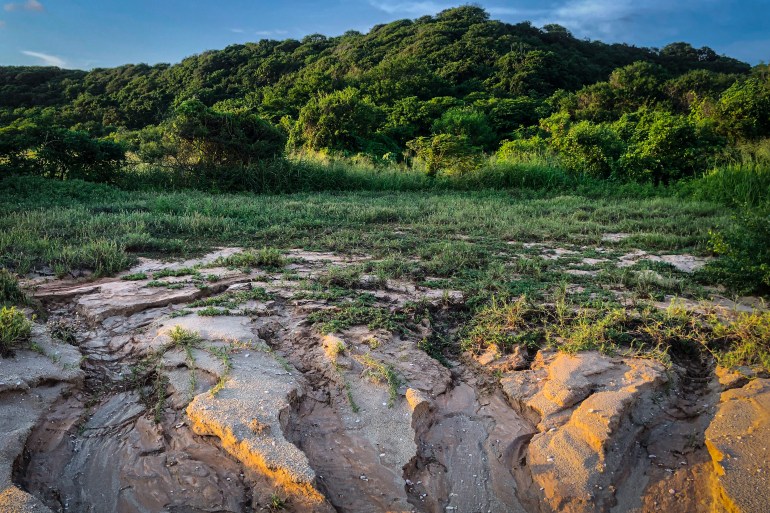
A new threat
That “lately” refers to the most recent threat to loom over Punta Colorada – the aforementioned shopping centre and hotels. Once again, organisations opposed to development joined forces to save the beach.
“This ecosystem is crucial,” explains Melchor, “because – besides having one of the most significant waves for bodyboarding – it hosts a wetland with white and red mangroves, protected species such as the leatherback turtle and crocodiles, various species of migratory birds, mammals, reefs and even geological remnants.”
What’s more, the proposed complex would shut down public beach access, depriving the residents of the last pristine beach in Puerto Escondido.
“Access to that beach,” says Esquerra, “would be totally privatised by the large hotel chains”.
To make matters worse, it was discovered that a water treatment plant next to the beach was overflowing due to inadequate tourist infrastructure and that wastewater was pouring directly into the ocean. So the coalition’s efforts became threefold: to improve sanitation, prevent the privatisation of beaches and stave off the alteration of the ecosystem.
This struggle went from the streets to the courts, starting with peaceful demonstrations, an online petition and requests for meetings with the governor and other political figures – to no avail.
“Seeing that the government persisted in its plan to develop Punta Colorada,” says Melchor, “we took legal action and initiated a collective protective lawsuit, claiming our right to a healthy environment”.
The groups gathered some 300 signatures, which were enough to convince a judge to suspend the construction permits.
“For now, that area cannot be sold or privatised,” says Esquerra.
But while this victory is promising, the fight isn’t over yet: The judge’s order is only temporary.
“We are still in the trial process awaiting the verdict,” says Melchor, explaining that the coalition is going over conservation proposals with the ministries of environment and tourism. “We are hopeful that the government will listen and understand the importance of preserving Punta Colorada.”
Advocates of the Colorada complex – including officials from the state and municipality – did not respond to requests for comment.
![beach tourism project Puerto Escondido [Nick Hilden/Al Jazeera]](https://www.aljazeera.com/wp-content/uploads/2024/03/Hotel-clear-sky-Puerto-Escondido-Nick-Hilden-1711225424.jpg?w=770&resize=770%2C513)
The big question
The fight over Colorada implies a broader question: How will Puerto Escondido react in the face of its rapid tourist influx?
Esquerra emphasises that the coalition is not against tourism.
“Our fight is against inequality and the lack of investment and planning in the face of growth,” she says, “which leaves both locals and tourists unprotected. A strong investment in infrastructure is needed to sustain growth and to guarantee access to clean water, beaches and seas free of wastewater, transportation and health and safety.”
“Since the pandemic,” says Melchor, “the growth of Puerto Escondido has been exponential. However, this is not reflected in infrastructure improvement”.
As a result, she adds, the town has experienced wastewater spills, power outages, water shortages and increasing traffic issues, as well as “new social problems such as gentrification, displacement, and dispossession” caused by the rapid increase in housing prices and cost of living.
So what can Puerto Escondido do to address these matters?
Melchor says that among the various solutions proposed, key factors involve investment in basic service infrastructure like drainage systems and treatment plants, as well as the regulation of construction, housing density and vacation rentals to ensure that money stays in the region and that taxes will be collected for reinvestment in the community.
Proponents of these actions argue they will not only protect the town but secure its status as a thriving tourist destination.
“The area will continue to grow,” notes Balassone, “so adopting these changes now will ensure that Puerto keeps the natural treasures that have drawn surfers and visitors from around the world in the first place”.
![beach tourism project Puerto Escondido [Nick Hilden/Al Jazeera]](https://www.aljazeera.com/wp-content/uploads/2024/03/Carrizalillo-beach-2-Puerto-Escondido-Nick-Hilden-1711224988.jpg?w=770&resize=770%2C432)
A global consideration
Puerto Escondido is not alone in its struggle to confront surging tourism. Residents of destinations around the world – from Thailand’s Chiang Mai to Colombia’s Medellin , Bali to Barbados, Portugal’s Lisbon to Vietnam’s Hoi An – are facing similar issues. And it is only going to become more pressing as the number of travellers and location-independent workers continues to climb.
According to those fighting in Puerto Escondido, solutions arise from dedicated community organisations.
“We’ve been doing a good job of cultivating a solid community,” says Salinas. “Almost everybody is involved in some sort of social project.”
“Change happens when communities unite at the grassroots level,” agrees Balassone, “and develop a long-term vision for the place that they love and a strategy for long-term protection”.
If the residents of similarly afflicted destinations should learn anything from the case of Puerto Escondido, these activists advise the prioritisation of people over profits.
“Puerto Escondido’s struggle can inspire other cities to unite and work as a community,” says Melchor. “I think we are an example that working together can achieve things that might seem impossible at first, such as stopping large constructions or billion-dollar developments.”
It all comes down to collective action.
“The unity of citizens is very important,” Esquerra affirms. “Power lies with the people and we are the ones who decide what we want for our cities and destinations. It is important to get involved and inform yourself, and to raise your voice when the interests of a few pass over the needs of the people.”

- [ April 28, 2024 ] WATCH LIVE: Court Is Now In Session From the Brevard County Jail Complex Brevard Crime News
- [ April 28, 2024 ] Arrests In Brevard County: April 27, 2024 – Suspects Presumed Innocent Until Proven Guilty Brevard Crime News
- [ April 28, 2024 ] HOT OFF THE PRESS! Enjoy Space Coast Daily, Brevard County’s Best and Most Read Magazine Brevard Business News
- [ April 28, 2024 ] 4EVER YOUNG Anti-Aging Solutions Merritt Island Offering Mother’s Day Specials Brevard News
- [ April 28, 2024 ] Platinum Coast Orchid Society 59th Annual Orchid Show Set May 3-5 at Kiwanis Island Park on Merritt Island Brevard Business News
Home » Home » Space Coast Office of Tourism Highlights Multi-Year Project at Lori Wilson Park in Cocoa Beach
Space Coast Office of Tourism Highlights Multi-Year Project at Lori Wilson Park in Cocoa Beach
By Space Coast Daily // April 6, 2024
Lori Wilson passed away in 2019 at the age of 81
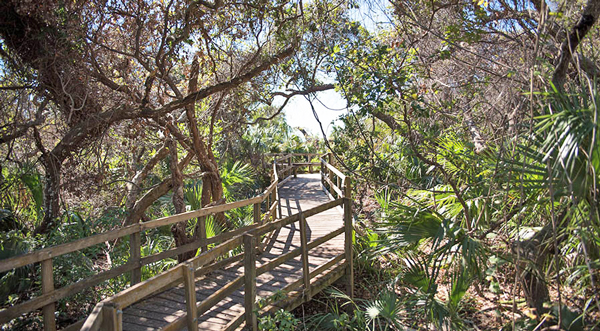
BREVARD COUNTY, FLORIDA – The Space Coast Office of Tourism began a multi-year project in Lori Wilson Park in mid-2020 to refurbish many areas that needed refreshing and updating.
The 32-acre park in Cocoa Beach hosted over 800,000 visitors in 2022 alone with more than 80% from outside the county – many attending two popular events, P1 powerboat racing at Thunder on Cocoa Beach and the Cocoa Beach Air Show.
Two large funding sources a Tourism Development Council Capital Facilities grant ($2.76M) and use of the Beach fund ($1.25M) were authorized by the Brevard County Board of County Commissioners.
These refurbishments included replacing the seven crossovers and connectors with a composite material that will last 30+ years (a massive improvement over using wood), completely renovating the dog park (with new sod, fencing, benches, trees, and sprinkler system), replacing shower towers and both the North- and South-side bathroom facilities, and an overhaul to the hammock by removing invasive plants and completely rebuilding the boardwalk.
Back in the 1970’s, the land was being used as an unofficial landfill. Florida State Senator, former County Commissioner, and Cocoa Beach resident Lori Wilson recognized that cleaning the area could return it to the former natural glory.
She put together a matching funds plan with the county and state sharing in the purchase of the property and the trash was cleaned out by various Boys and Girls Clubs over several weeks.
The community unanimously decided to name the park after Wilson, who was also a major proponent of manatee protection laws, the Equal Rights Act, and the removal of paid toilets in public women’s restrooms.
Wilson was appointed by Gov. Claude Kirk to fill a vacancy on the Brevard County Commission in 1969 and was the first woman in the state to receive a gubernatorial appointment like this.
She then was elected to a full term in 1970 and elected Chair in 1972, the first woman to do so.
Later that year, she was the third woman elected to the Florida Senate and re-elected in 1974, serving until 1978. Wilson was an honorary director of the Central Florida Zoological Society and legislative director of the Florida Injured Wildlife Sanctuary.
Lori Wilson passed away in 2019 at the age of 81, but her legacy lives on.
Mansfield Maritime Hammock
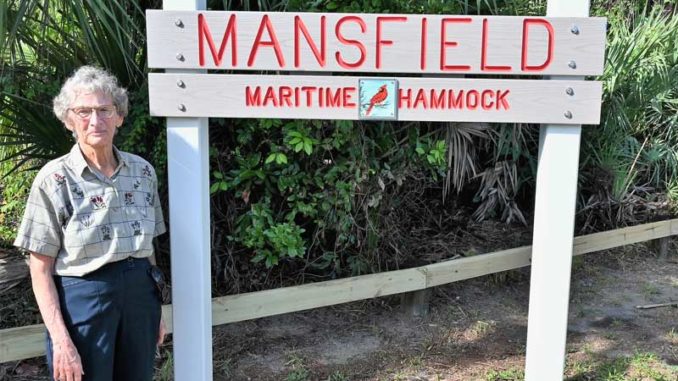
The Lori Wilson Park Maritime Hammock was renamed the Mansfield Maritime Hammock in August 2022 to honor the inspiring efforts of Phyllis and Howard Mansfield, volunteers who worked to protect this habitat for the birds that call it home.
As long-time residents of Cocoa Beach, the Mansfields were deeply concerned about the health of the hammock, along with the dozens of types of migratory and native birds that visited the area, as it’s a part of the Great Florida Birding and Wildlife Trail.
They removed exotic plants and litter from the grounds, cleaned bird feeders, maintained a watering pond, communicated local conditions to bird watchers, and planted hundreds of native plants in the city. Phyllis Mansfield recounted how she and others had thwarted potential plans to build another road through the hammock.
She said, “This maritime hammock is a wonderful part of the greater Lori Wilson Park and I hope my friends – county residents, birders and volunteers – will all work to ensure this maritime hammock’s wildlife habitat will be restored by removing and replacing invasive plants with desirable bird attractors and a water feature.”

CLICK HERE FOR BREVARD COUNTY NEWS

Similar Stories
FEATURED STORIES

Click Here to Sign Up for Text Alerts
Or Signup Below For Email Alerts!
‘The Derby Shores,’ major tourism destination set to break ground this summer
WICHITA, Kan. (KWCH) - The hopes of bringing the largest tourism destination in south-central Kansas to Derby are stronger than before. In May 2022, the Derby City Council approved the construction of a man-made lagoon, hotel, rock-climbing facility, and more.
On April 15, Derby Destination announced “The Derby Shores,” a 4.5-acre, $160 million project in partnership with Crystal Lagoons.
The Derby Shores will have a public access inland ocean. “It’s like being at a Caribbean beach resort, except the water is even clearer,” said Rodney Steven II, one of the Derby Destination Development partners. Tourists will find man-made beaches, waterslides, water sports, beach volleyball courts, and waterfront restaurants.
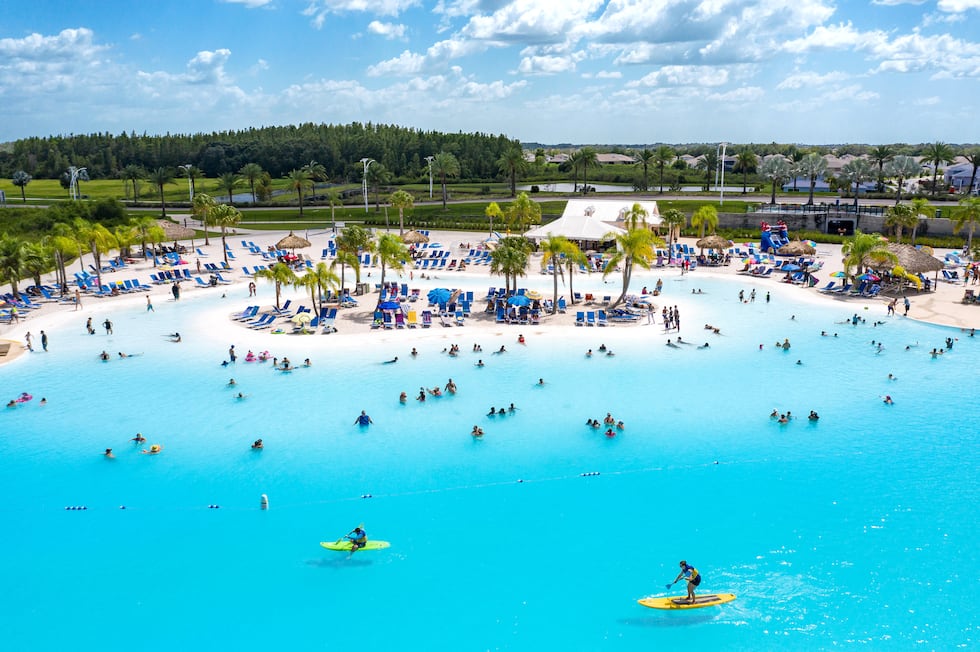
Developers predict the major tourism project will attract visitors from surrounding states and beyond. They hope The Derby Shores will be a one-stop shop with a hotel and RV/camping park.
“Everyone is excited about the tourism dollars, but there will be direct benefits for Derby residents, too,” said Steven. “We’re building a high-end apartment complex right on the beach, so residents and guests will have access to beach life all summer long.”
Construction on the project is expected to start before July 1.
Copyright 2024 KWCH. All rights reserved. To report a correction or typo, please email [email protected]

U.S. Marshals Service warns of nationwide scam

LIVE BLOG: Severe storms bring tornados, hail across KS on Saturday

Weather Alert: Severe storm risk Saturday

State of disaster emergency issued for threat of severe storms

Midwest tornadoes flatten homes in Nebraska suburbs and leave trails of damage in Iowa
Latest news.

DEA disposes of nearly 50lbs of drugs in Bel Aire during National Drug Take Back Day
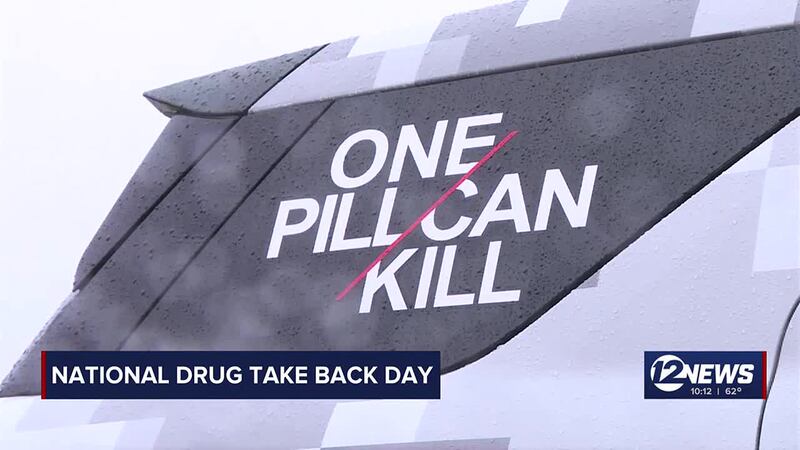
Oxford Vista welcomes community during grand opening

Oxford Vista grand opening
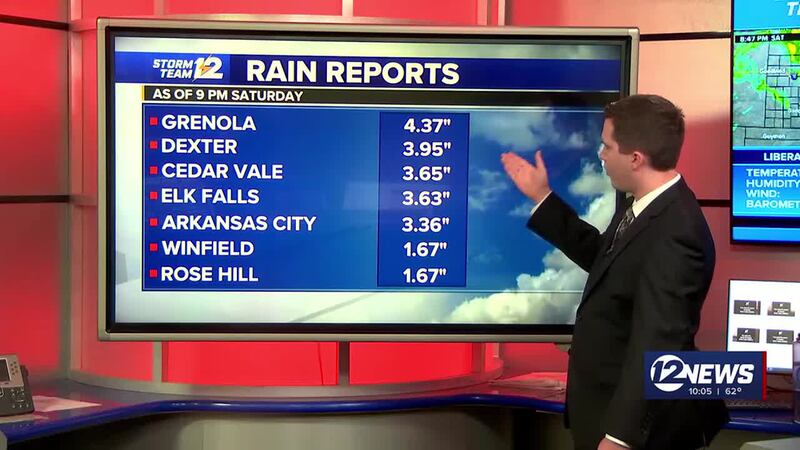
Storm reports from severe weather on Saturday

Land Conflict Watch
Join the lcw community, exclusive monthly policy briefs, stories from the ground, quarterly analytics report, curated expert talks, merchandise and much more. support our work.

Shamuka Tourism Project in Odisha's Puri to Disrupt Coastal Ecology and Local Livelihoods
Reported by
Sibasish Ray
Legal Review by
Published on
September 1, 2016
May 20, 2022
People Affected by Conflict
Households affected by conflict.
Land Area Affected (in Hectares)
Starting Year
Location of Conflict
Sipasarubali
Reason or Cause of Conflict
Land conflict summary.
The proposed Shamuka Beach Project, touted as India's largest coastal tourism project is set to come up in 3,000 acres of land at Sipasarubali , an administrative area consisting of around twenty villages, located roughly 10km south of Puri town, composed of mainly landless poor. In 1994, the Odisha High Court directed the state to distribute 214 acres and another 33 acres of ceiling surplus land among the poor along with land titles. Only a few of the families were given pattas, but not the land. Thereafter, the government included this land in its Land Acquisition Programme for the upcoming Samukha Tourism project which is to be carried out in a phased manner and will involve the construction of five star hotels, resorts, golf courses and entertainment centers among others. This has led to a renewed conflict. For the Shamuka project, 982 acres was decided to be acquired in the Mauza Sipasarubali. The conflict took place when the government instead of complying with Odisha High Court order of 1994, started creating a fence around the land in an area of 1,307 acre. This led to a protest by people from more than 20 villages who united under the banner of Upakuliya Jami O Jangal Suraksha Samithi (UJJSS). They appealed to the government to give them the legal right over the land. Further, in 2015, on account of a petition by green activist Prafulla Samantara, the National Green Tribunal stayed the work on the project due to illegal tree felling and non-compliance of environmental norms under Environmental Protection Act, 1986. In 2019, after four years, the decision to revive the project was taken by the State government who had already completed the acquisition of around 972 acres of land. This was met with protests by members of the coastal land and forest security samiti (UJJSS) who remarked it to be "anti environment and anti people", on account of it severely disrupting the complex coastal ecology and local livelihoods. They called for the immediate intervention of the Chief Minister. In 2020, the Orissa government decided to revise the master plan for the project in lieu of the changing ecology of the area. It is set to be developed over three phases of five years each.

Demand/Contention of the Affected Community
Demand for legal recognition of land rights
Demand for promised land
Complaint against procedural violations
Other Demand/Contention of the Affected Community
Region classification.
Urban and Rural
Type of Land
Type of common land.
Forest and Non-Forest
What was the action taken by the police?
How many people did the police detain or arrest?
What is the current status of the detained/accused persons?
Did the person face any violence while in police custody?
If any arrests took place, were the accused persons produced before a judge within 24 hours of the arrest?
If the accused was not produced before a magistrate within 24 hours, or not produced at all, what were the reasons?
Legislation under which the accused was charged
Was the accused person informed of their right to legal representation? Did the accused person have access to legal aid?
In cases where the accused person approached the court for bail, was bail granted?
Why was bail granted or rejected? If granted, what were the bail conditions and quantum of bail?
Were there any other notable irregularities that took place, or other significant details?
Details of sources (names of accused, names and numbers of any lawyers, names of any police officers contacted)
Status of Project
Original Project Deadline
Whether the Project has been Delayed
Significance of Land to Land Owners/Users
Whether the project was stalled due to land conflict
Source/Reference
Total investment involved (in Crores):
Type of investment:
Cost of Project
Year of Estimation
Page Number In Investment Document:
Has the Conflict Ended?
When did it end?
Why did the conflict end?
Categories of Legislations Involved in the Conflict
Legislations/Policies Involved
Lorem ipsum dolor sit amet, consectetur adipiscing elit. Suspendisse varius enim in eros elementum tristique. Duis cursus, mi quis viverra ornare, eros dolor interdum nulla, ut commodo diam libero vitae erat. Aenean faucibus nibh et justo cursus id rutrum lorem imperdiet. Nunc ut sem vitae risus tristique posuere.
Whether claims/objections were made as per procedure in the relevant statute
What was the claim(s)/objection(s) raised by the community?
What was the Decision of the Concerned Government Department?
Legal Processes and Loopholes Enabling the Conflict:
Violation of environmental laws
Lack of legal protection over land rights
Non-implementation of land ceiling laws
Legal Status:
Status of Case In Court
Whether any adjudicatory body was approached
Name of the adjudicatory body
National Green Tribunal
Name(s) of the Court(s)
Odisha High Court
Case Number
Main Reasoning/Decision of court
Major Human Rights Violations Related to the Conflict:
Whether criminal law was used against protestors:
Reported Details of the Violation:
Date of Violation
Location of Violation
Additional Information
Nature of Protest
Advocacy (for inclusion in courts)
Campaigns (grassroots organisations/press releases/media)
Development of a network or collective
Protests/marches
Government Departments Involved in the Conflict:
Government of Odisha Tourism Department, Revenue department of Odisha, Odisha Tourism Development Corporation
PSUs Involved in the Conflict:
Shamuka Tourism Development Corporation Limited
Did LCW Approach Government Authorities for Comments?
Name, Designation and Comment of the Government Authorities Approached
Corporate Parties Involved in the Conflict:
Did LCW Approach Corporate Parties for Comments?
Communities/Local Organisations in the Conflict:
Residents of Puri district
Information on the use of criminal law
Resources related to conflict.
- News Articles Related to the Conflict:
- Documents Related to the Conflict:
- Links Related to the Conflict:
Image Credit:

Documented By
Reviewed By
Hemgir block

Slum Dwellers in Odisha's Bhubaneshwar Resist Demolition Drive, Block Roads
Bhubaneshwar
Infrastructure
Kotia Villages in Odisha Reel under Identity Crisis, Andhra Pradesh Claims Territory
Employees of Sugar Company in Odisha Demand Land Promised 50 Years Ago
Tribes in Odisha's Kodingamali Hills Unite, Demand Bauxite Mining to be Stopped
Kodingamali
IOCL's Pipeline Project Displaces Thousands in Odisha, Affected Families Demand Compensation, Rehabilitation
Jagatsinghpur
Odisha Forest Department Demolishes Houses of 32 Families during Covid-19 Pandemic
Conservation and Forestry
Odisha Government Cuts 40,000 Trees for Adani Mine, Over 1,800 Families Fear Displacement
You can read our past newsletters here
Your privacy and security are of utmost importance to us. Read our ‘Privacy Policy’ for information on how your data is used.

Get in Touch!
© 2023 Nut Graph LLP All Rights Reserved.

For LCW Members

Emergency Beach Erosion Control Project
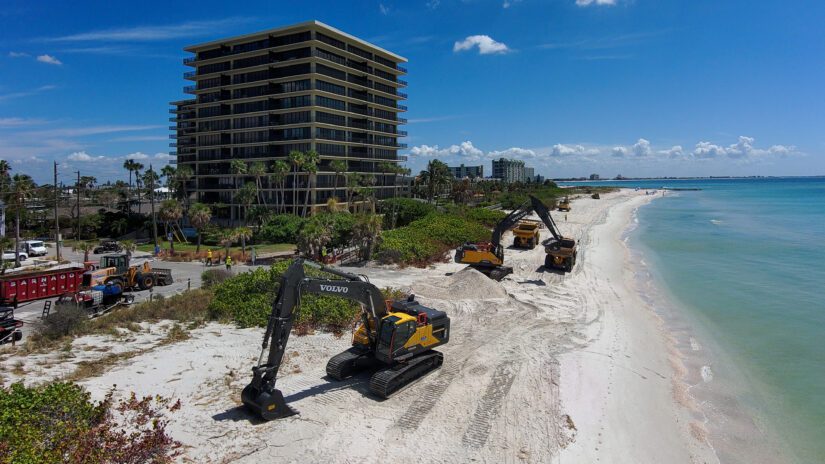
Project Location
Multiple, see map, project status, construction: completed.
Note: Public beach access points within municipal limits are maintained by the municipality. For specific questions about the status of public beach accesses, please contact the relevant municipality.
Project Overview
Pinellas County conducted an emergency shoreline restoration project to mitigate critical erosion caused by Hurricane Idalia. The project consisted of constructing dunes. The active project area moved strategically along the coast, as County teams triaged the damage and worked on the most critical areas first.
This project is separate from the federal beach nourishment project that is currently on hold with U.S. Army Corps of Engineers (USACE).
Sand was trucked in from an authorized location, placed on the beach and shaped into dunes. The new dunes were also be planted with vegetation.
Project Timeline
Emergency beach erosion control, information for property owners.
For Pinellas County to place sand and construct dunes, we must obtain short-term construction easements from property owners. These County easements are temporary and different from the perpetual easements required by the USACE project. In lieu of initiating individual projects, property owners are strongly encouraged to allow the County to install erosion control measures that have been permitted and designed to work together.
- To notify the CMA team, call (727) 479-5564.
- Provide your name, a description of the work and the address where the work will occur.
- The CMA team will inspect the beach to ensure the work will not damage or interfere with sea turtle nesting.
- An inspection is required for each day that work is done.
- Property owners are not to place sand in the dune line. Debris and rubble cannot be placed on the beaches for any reason – These requirements remain under the State’s emergency order.
- Some activities may require additional permits from the U.S. Army Corps of Engineers, Pinellas County and/or your local municipality.
- For coastal activities that require permits from Pinellas County visit Pinellas.gov/docks-dredge-fill/ .
- For additional information related to CCCL and JCP permitting requirements, see the State’s emergency order .
Open the project map in its own tab
Project Funding
This emergency project is supported by the Tourist Development Tax. For more information visit FromVisitorsWithLove.com .

Saudi Arabia wants big spenders for the first part of its Neom megaproject
- Saudi Arabia plans to open the first part of its Neom megaproject this year.
- Sindalah, an island resort, is aimed at a luxury clientele and the global yachting community.
- Saudi Arabia is pushing to distinguish itself in the high-end luxury market to compete with Dubai.
Saudi Arabia plans to open the first region of its Neom megacity by the end of the year.
The island of Sindalah will provide the first physical glimpse into the ambitious desert project, which has reportedly been scaled back from its initial plans due to financial struggles .
Developers say they want the island to be an "exclusive gateway to the stunning Red Sea," adding that they planned to cater to luxury clientele and the global yachting community.
Neom recently ended investor roadshows in China by confirming the luxury island resort would open this year, Arab News reported . It's set to have three luxury hotels, a golf course and sports club, beach club, marina, and dozens of restaurants and shops.
In January Marriott International said it had signed an agreement to bring Apartments by Marriott Bonvoy to Sindalah. Chadi Hauch of the hotel operator said the concept was a "great fit" for the island and reflected a "growing desire for premium and luxury apartment-style accommodation" from travelers.
The following month Saudi music entertainment company, MDLBEAST, announced it would operate the Sindalah Beach Club on the island.
Vives, Neom's chief urban planning and islands officer, said in a press release that Sindalah will be a "new model for luxury travel and living."
Capturing the luxury tourism market
The Saudi government's focus on the luxury market is an attempt to distinguish itself from nearby Dubai, part of the United Arab Emirates.
"Dubai goes for the mass market of people wanting to go and have fun in the winter," Kristian Coates Ulrichsen, a fellow for the Middle East at Rice University's Baker Institute for Public Policy, told Business Insider.
"The Saudis are increasingly pushing themselves toward a high-end luxury market, which is what Sindalah and, to some extent, some of the other Red Sea projects are going to cater for," he said.
Saudi Arabia hasn't been shy about its tourism aspirations, claiming it aims to attract between 100 million and 150 million visitors by 2030 .
However, Dubai is a formidable competitor. It already has a 20-year head start in the tourism race, both in terms of infrastructure and aspirational appeal. It also has Emirates, the popular long-haul airline that brings tens of millions of people through Dubai annually.
If Neom's ambitious plans become a reality, the Saudis are betting that their megaprojects can attract some high-end travelers from the glitz and glamor of its neighbor.
Managing ambition
Developing luxury resorts like Sindalah may also help Saudi Arabia encourage tourism sooner by starting smaller.
Sindalah is one of the more realistic elements of Neom's futuristic plans . It pales in comparison to structures like the mirrored "horizontal skyscraper" known as The Line.
"It's less ambitious in scope and scale," Ulrichsen said. "That might mean that it's more realistic to open first."
Recent reports have indicated the Saudis may be facing a harsh reality when it comes to f inancing some of the megaprojects included in Saudi Crown Prince Mohammed bin Salman's Vision 2030 project .
Previous deadlines have already been pushed back for some of Neom's more ambitious projects.
Earlier this month, Bloomberg reported that the Gulf Kingdom had reduced estimates for the number of people expected to live in The Line .
The report said the realities of some of the trillion-dollar investments included in the Vision 2030 project were starting to cause alarm at the highest level of the country's government.
Neom did not immediately respond to a request for comment from Business Insider.
If you enjoyed this story, be sure to follow Business Insider on Microsoft Start.

Brevard Commission backs funding derelict vessel removal, rejects tourism/lagoon grants

The Brevard County Commission rejected an advisory board's recommendation to reinstate a grant program for projects that would benefit both the Indian River Lagoon and tourism.
Instead, county commissioners unanimously voted Tuesday in favor of a proposal from Commissioner John Tobia to designate up to $150,000 from tourist development tax revenue for the removal of so-called derelict vessels from local waterways. The county will save the rest of the money for future beach renourishment projects.
The advisory Brevard County Tourist Development Council last month unanimously recommended that the county fund the Tourism + Lagoon Grant Program in the amount of $500,000 for the 2024-25 budget year that begins Oct. 1, with a maximum individual grant of up to $50,000. Under the proposal, the money would come from the Space Coast Office of Tourism's beach fund, generated by revenue from the county's 5% tourist development tax on hotel and motel rooms, vacation rentals and other short-term rentals.
County commissioners, however, overrode that recommendation.
Previously approved grants: Brevard commissioners approve 10 grants for projects to help restore Indian River Lagoon
Tobia contended that most projects that would have applied for the Tourism + Lagoon grants instead could try to tap into county money through the much-larger Save Our Indian River Lagoon Program for projects designed to improve the condition of the lagoon. That program was created with a special half-cent sales tax that Brevard County residents voted to impose on themselves in 2016 for the following 10 years, with 62.4% support from voters. The lagoon tax has generated more than $378 million so far.
Tobia said the county's derelict vessel program would not qualify for Save Our Indian River Lagoon Program grants. So he wanted to push for this county allocation to help continue efforts to remove unsightly abandoned boats from local waterways.
He said tourist development tax grants have been a regular funding source of derelict vessel removal by the county's Natural Resources Management Department . During the previous three budget years, a total of 133 vessels were removed, with the help of $283,750 from the tourist tax.
In the last 16 years, a total of 310 vessels have been removed from local waterways at a cost of more than $1.4 million. They had a total of 930 tons of materials; 450 gallons of fuel and oil; and 42 marine batteries.
Among other funding sources for the county's boat removal program have been the Florida Inland Navigation District , the Florida Fish and Wildlife Conservation Commission , and the Brevard Boating Improvement Funds, derived from the county's portion of vessel registration fees.
The Tourism + Lagoon Grant Program previously was funded for up to $1 million for several years. This grant program was suspended for the 2023-24 budget year, as a result of the expenditure of all tourist-tax-generated beach funds in order to repair the South Beaches because of damages from several storms in late-2022.
In the 2022-23 budget year, 10 projects received a total of $939,343 through the Tourism + Lagoon Grant Program. Among them were ones designed to help seagrass restoration, shoreline stabilization. oyster and clam restoration, and mangrove restoration.
Tobia pushed his proposal to help have enough money in reserves in the Office of Tourism beach fund to pay for beach renourishment, including if future hurricanes or other storms wash away sand from local beaches.
Tobia said the $8 million now in beach fund reserves may sound like a lot, but could be depleted by a single storm.
He noted that researchers at Colorado State University earlier this month published a forecast predicting an “extremely active” 2024 hurricane season, with 23 named storms, including 11 hurricanes and five major hurricanes.
For every dollar in tourist tax money that goes toward beach renourishment, the county typically gets $8 to $9 from federal and state funding sources. But there usually is a long wait before the county receives these reimbursements.
Dave Berman is business editor at FLORIDA TODAY. Contact Berman at [email protected] , on X at @bydaveberman and on Facebook at www.facebook.com/dave.berman.54
Tourism Web Portal
About the portal.
A technological tool for effective communication between the leading players in the Moscow tourism market and representatives of the foreign/regional tourism industry through online events. OBJECTIVES: • Building long-term cooperation with foreign/regional representatives • Raising awareness among foreign/regional representatives of the tourism industry of the tourism opportunities, measures and attractiveness of the city of Moscow in the field of tourist infrastructure development
Moscow City Tourism Committee
The Tourism Committee, or Mostourism, is the executive body of the Moscow City Government that oversees tourist activities in the capital. The Committee is responsible for legislative initiatives, congress and exhibition activities, and event and image projects. As the brand manager for an attractive tourism image for Moscow, Mostourism constantly analyses global trends, offers Russian and foreign tourists what they want, and also uncovers new opportunities for the capital in terms of interesting and rewarding leisure activities.
ANO «Project Office for the Development of Tourism and Hospitality of Moscow»
Syundyukova Yulia [email protected] Mezhiev Magomed [email protected]
Video materials about Moscow
You will be redirected to your dashboard shortly. We will also call you back in 24 hrs .
- Beaches In Moscow: 10 Spots To Get The Sunscreen Out In The Winterland
23 Mar 2023
Moscow is really a wow destination when it comes to tourism in Russia. And adding up to its attraction, there are awesome and breathtaking beaches in Moscow that describe this depart in the special light. The summers in the city Moscow are quite mild.
Moscow is well-known globally for its massive deserts, high-rising mountains, affluent heritage sites, natural & eye-catchy geyser fields, and astonishing art & architecture but more than that there are various beaches near Moscow.
Top 10 Famous Beaches In Moscow
From the soft to sub-tropical white sands on the beaches, take a glimpse at these faultless Moscow beaches that must be added to your summer holiday in Russia. Without any further ado, here is the comprehensive list:
- Serebryany Bor
- Rublyovo Beach
- Chyornoye Ozero
- Bolshoi Gorodskoi Prud
- Levoberezhny Beach
- Meshcherskaya Recreation Area
- Beloye Lake
- Shkolnoye Lake
1. Troparyovo
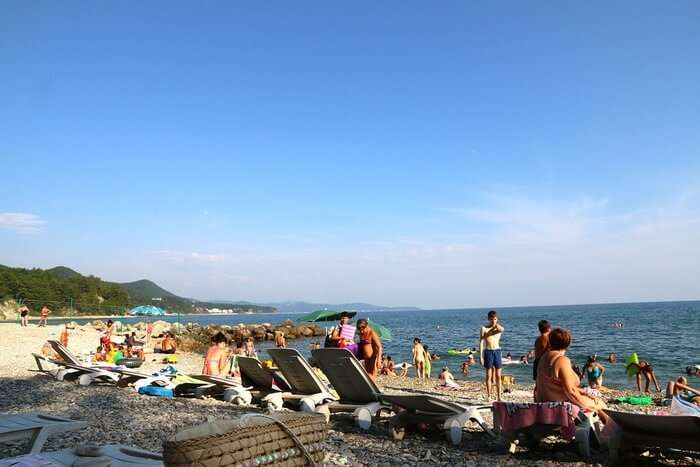
Image Source Troparyovo is a small beach which is located in the large grounds of the Troparyovsky Forest Park. This beach is one of the favorite Russian beaches in Moscow among local individuals. Moreover, this beach is considered as an ultimate place to gain a swimming experience and calm down in the south-west corner of the city. Moreover, the Troparyovsky is a well-liked preoccupy for the Moscow’s younger people as most of the visitors can hire catamarans, bicycles, rollerskates, and boats for an unassuming sum.
The place is more adventurous and exploratory — or the individuals who are interested to know about – what the hamster experiences like — they can attempt their hand at the water sorbing on this lake. Moreover, there are many other facilities that get on this place such as – a big sports field, free Wi-Fi, and a wide children’s play region that add a lot to the charm. The place doesn’t have any kind of flashy services such as the beach resort, thus, it is the ultimate place for spending a tranquil day with your family. Also, there is a big car parking facility which is just next to the Ulitsa Akademika Vinogradova, if you are coming from your car. Moreover, it is a short walk distance from the metro.
Location : 12 Akademika Vinogradova St, Moscow, Russia Famous For : Sports Things To Do: Bicycling, rollerskating, swimming
Must Read: 15 Interesting Things To Do In Moscow: Trekking, Opera, And More
Europe Holiday Packages On TravelTriangle
Explore the most beautiful places to visit in Europe, from Paris to the Venice canals and from the Greek islands to the Swiss alps. Book customized packages by expert agents on TravelTriangle. Inclusive of airport transfers, cab, resort, sightseeing and meals. Best holiday experience Guaranteed. Book Now

Magnificent Switzerland Holiday 6D/5N Package @ Rs 69,999
Plan your trip today!

Magnificent Europe Tour 7D/6N Package @ Rs 70,975
Get quotes from multiple travel experts.

France & Switzerland Tour Package 8D/7N @ Rs 90,000
Compare & customize quotes before booking.

Scintillating Spain & Portugal Tour 11D/10N @ Rs 101,150
Have Questions? Talk to our travel experts today.
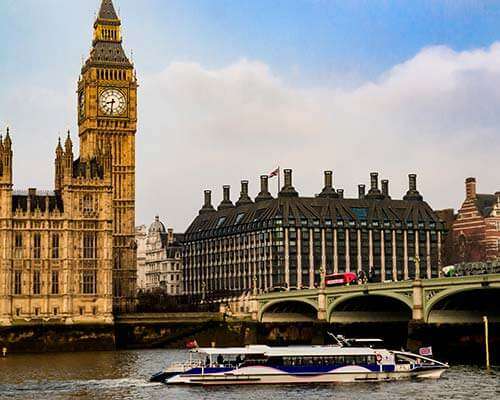
6 Country Europe Tour Package 12D/11N @ Rs 118,650
Best prices guaranteed. EMI option available.

See more at TRAVELTRIANGLE.COM
3. Rublyovo Beach

Image Source Rublyovo Beach is known as Russia’s most esteemed regions that offer a relaxing experience with rich and beautiful surroundings. From beach games to wakeboarding and for the special foam party, there is something for everybody to take pleasure in this upscale and fashionable resort. Kids gain a lot of fun for many hours in the special and huge children’s area which is featuring from the remarkable waterfall.
Moreover, most of the Saturdays in the summer season the club also hosts the late-night beach parties for the young revelers. The water is very clean, the sand is too much silky as well as there are a plethora of beach relaxing chairs. Thus, get a dip and enjoy the most relaxing atmosphere of this place. The entrance cost of this place is 200 rubles.
Suggested Read: Shopping In Moscow: 14 Top Places That Will Make You Believe The City Is As Classy & Chic As Milan
4. Chyornoye Ozero
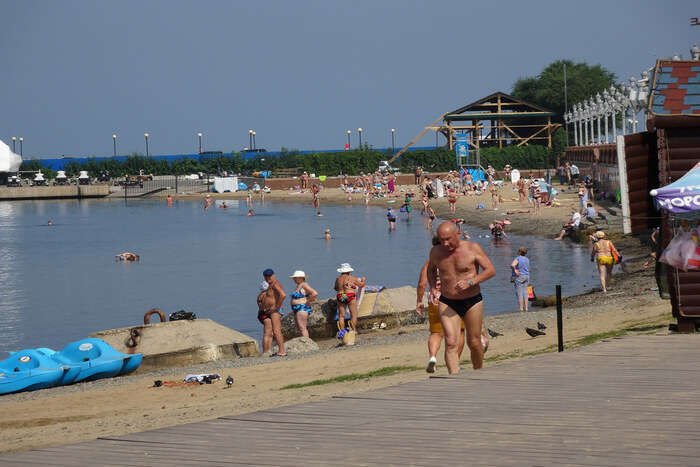
Image Source This picturesque and charming beach is situated on the edge of the forest which is located at the east of the city, Moscow. If we translate the name of this lake in English, the meaning is “black lake”. The ‘black lake’ admittedly sounds similar to the name of a worthless horror movie than an alluring beach resort. But don’t go with the name. Despite its misty appearance which is generally caused by the peat on the bottom of this lake – the water of this lake is very clean and also it is perfect for the summertime swim. There are also a plethora of cafes, restaurants, hire boats on rent, and many other facilities that are more upscale than this beach club offers.
Once you are established in your beach costume, you will experience like a shelter of tranquil, far from the busy streets of the city. There are a wide playground and the lifeguards which mean you do not need to be anxious if you go with your kids. This beach is also free for all visitors. Thus, the place offers a more relaxing atmosphere to have fun, enjoy a picnic, and swim in water this summer.
Location : Zelinograd, Microdistrict 6, Moscow, Russia Famous for : Black Lake Things to do : swimming, cafes, boating
Suggested Read: 20 Fascinating Places To Visit In Moscow That Reflect The Real Russian Beauty!
5. Bolshoi Gorodskoi Prud

Image Source Bolshoi Gorodskoi Prud pond and beach is most popular in Moscow, due to its location, pristine condition, and size. This beach is located in the west region of Moscow. The entrance to this place is free. Moreover, on the hottest summer season, you get the space on the sand to ground your parasol.
The place offers many activities such as sunbathing and swimming. In fact, people can play air hockey, billiards, volleyball, ping-pong, and even hire a boat on rent and discover the bursting length of this pond. This area is ideal for the families as the place offers a particular kid’s zone with many aquatic attractions, such as water slides, swings, and more.
6. Levoberezhny Beach

This sunny beach is lined with multiple cafes and restaurants, volleyball courts and soccer pitches to have a good time out in the sun with your beach pals. The beach here has grassland and does not have sand, you can take a riverboat tour and purchase tickets for these from the station.
Location : 5 Pribrezhny Lane, Moscow, Russia Famous for : Riverboat Tour, Picnic spot Things To Do : Picnic spot, Riverboat tour, cafes, restaurants, volleyball courts, soccer pitches
7. Meshcherskaya Recreation Area

A small recreational spot, it can be thoroughly enjoyed with your friends who will have a great time hiding away from the sun in the woods. The beach occupies a tiny spot with sand and a grassy patch along with woods in the background as it is located in a village.
Location : 5 Voskresensky St, Moscow, Russia Famous For : Boating Things To Do : Boating, Biking
8. Beloye Lake
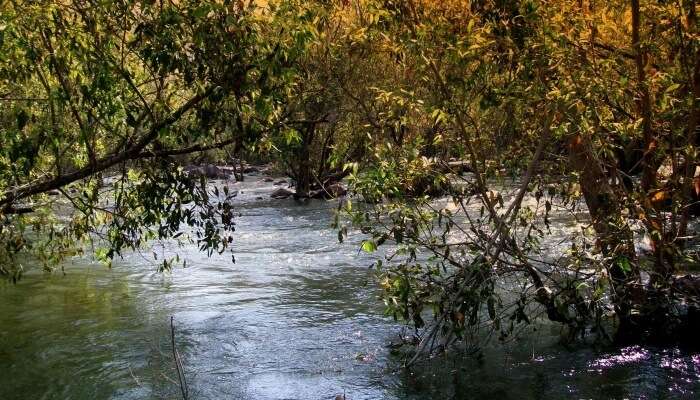
Beloye Lake is the only Lake in Moscow where swimming is officially allowed and locals can also enjoy fishing as the lake has plenty of them. The water is said to be cleaner and there is a famous landmark, the Church of the Assumption of the Blessed Virgin Mary in its proximity.
Location : 2/6 Zaozernaya St., Moscow, Russia Famous For : Swimming Things To Do : Fishing, Swimming
9. Beach Club
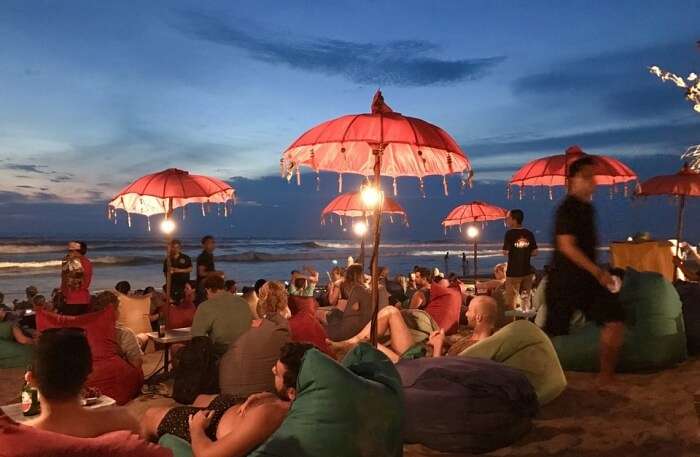
Everybody deserves to pamper themselves after a hectic day at work. To beat the heat and escape the scorching sun, head to the Royal Beach Club to cool off and revive yourself after a stressful week of work. As fancy as it sounds, the Beach Club is slightly heavy on the pockets but, the facilities available at this club are top-notch. You can even rent a room for the night and enjoy the tranquil sunrise just before your morning swimming session. The pools are heated, there are VIP areas and the white sand is frequently renewed which is brought in from the Maldives.
Location : 39 Leningranskoye Highway, Moscow, Russia Famous for : Watersports, Wedding Photoshoots Things To Do : waterskiing, dining-in
10. Shkolnoye Lake
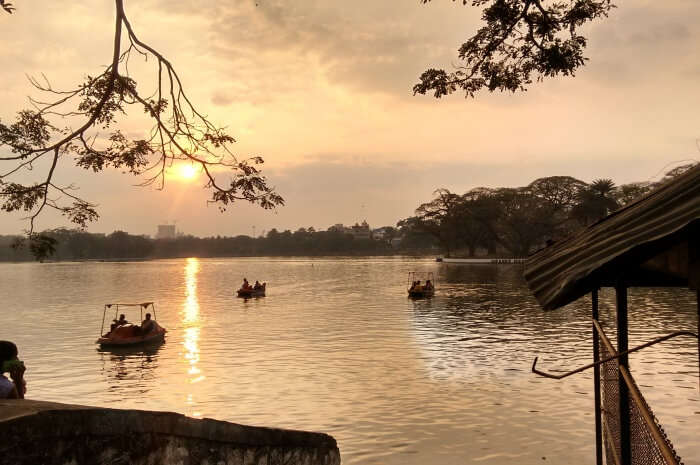
With an interesting history behind this lake, this small pond makes for a perfect spot for all recreational activities located amidst the urban chaos. You can find cafes nearby to grab a quick bite and kill your hunger pangs.
Location : Zelinograd, Microdistrict, Moscow, Russia Famous for : Swimming Things To Do : Swimming, Boating
Further Read: With The Red Square Turning White, Snowfall In Moscow Hits A 100-Year High!
Thus, this summer season plans your vacation to these interesting and offbeat places. Though, when the climate gets warm the local populace goes off for the swim as there are many beaches in Moscow that offer you a unique Russian vacation experience.
Beaches in Cape Town Nude Beaches In Thailand Beaches In Jordan
p.box-links a { display: inline-block; margin-right: -2px; font-size: 13px; -webkit-box-sizing: content-box; -moz-box-sizing: content-box; box-sizing: content-box; border: none; color: rgb(0, 0, 0); -o-text-overflow: clip; text-overflow: clip; background: #98eae3; -webkit-transform: skewX(-20deg); transform: skewX(-8deg); text-decoration: none !important; padding: .2em .6em .3em; margin-top: 2px; } p.box-links a:hover { background-color: #000000; color: #ffffff; }
Looking To Book An International Holiday?
Book memorable holidays on TravelTriangle with 650+ verified travel agents for 65+ domestic and international destinations.

Trip to Sri Lanka at Rs 13,500/-
Plan Your Vacation Today!

Trip to Singapore at Rs 20,499/-
Get Quotes From Local Experts

Mauritius Holiday Starting at Rs 65,000/-
Talk to Our Experts Today

Maldives Honeymoon Trip at Rs 39,800/-
Pay with easy EMI Option

Europe Trip at Rs 89,999/-
All Inclusive Deals

Vacation in Dubai at Rs 27,499/-

Hong Kong Holiday at Rs 24,999/-
Money Safe Guarantee

Thailand Holiday at Rs 7,999/-
Flights Excluded
Recent Posts

8 Small Towns In Russia One Must Never Forget To Explore

Saint Petersburg In June 2023: A Comprehensive Guide To The Venice Of The North
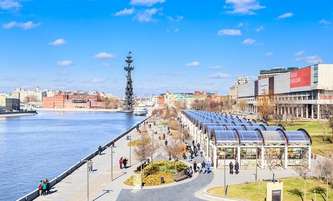
If You Are Wondering Why Moscow In April Is A Good Time To Visit, Here’s Why It Is
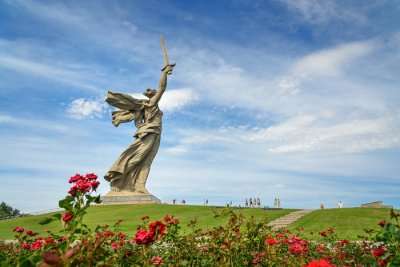
The Motherland Calls: A Perfect Epitome Of Cultural & Structural Excellence
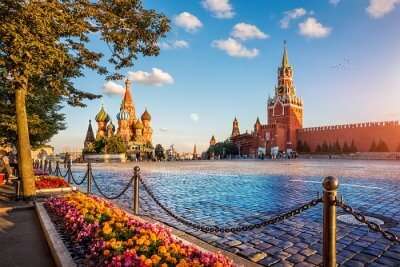
Summer In Russia: For Soaking In The Country’s Most Splendid Vibes On Your Next Trip!

8 Best Hostels In Moscow To Have A Perfect Budget Holiday In This Glorious Russian City!
Trending Blogs

20 Mysterious Places In India To Visit In 2023 More Bizarre Than The Bermuda Triangle

10 Scariest Roads In India That Are A Driver’s Nightmare

101 Places To Visit In India Before You Turn 30 in 2024

35 Exotic Places To Visit In December In India 2024 To Enjoy A Surreal Vacation

60 Best Honeymoon Destinations In India In 2024

95 Best Honeymoon Destinations In The World In 2023 For A Romantic Escape!
Best Places To Visit In India By Month
Best places to visit outside india by month.
- TravelTriangle
- Destinations » Russia »
- Tour Packages
- Honeymoon Packages
- Family Packages
- Budget Tour Packages
- Luxury Tour Packages
- Adventure Tour Packages
- Group Tour Packages
- Kerala Tour Packages
- Goa Tour Packages
- Andaman Tour Packages
- Sikkim Tour Packages
- Himachal Tour Packages
- Uttarakhand Tour Packages
- Rajasthan Tour Packages
- Tour Packages From Delhi
- Tour Packages From Mumbai
- Tour Packages From Bangalore
- Tour Packages From Chennai
- Tour Packages From Kolkata
- Tour Packages From Hyderabad
- Tour Packages From Ahmedabad
- Kerala Tourism
- Goa Tourism
- Sikkim Tourism
- Andaman Tourism
- Himachal Tourism
- Uttarakhand Tourism
- Rajasthan Tourism
- Hotels in Kerala
- Hotels in Goa
- Hotels in Sikkim
- Hotels in Andaman
- Hotels in Himachal
- Hotels in Uttarakhand
- Hotels in Rajasthan
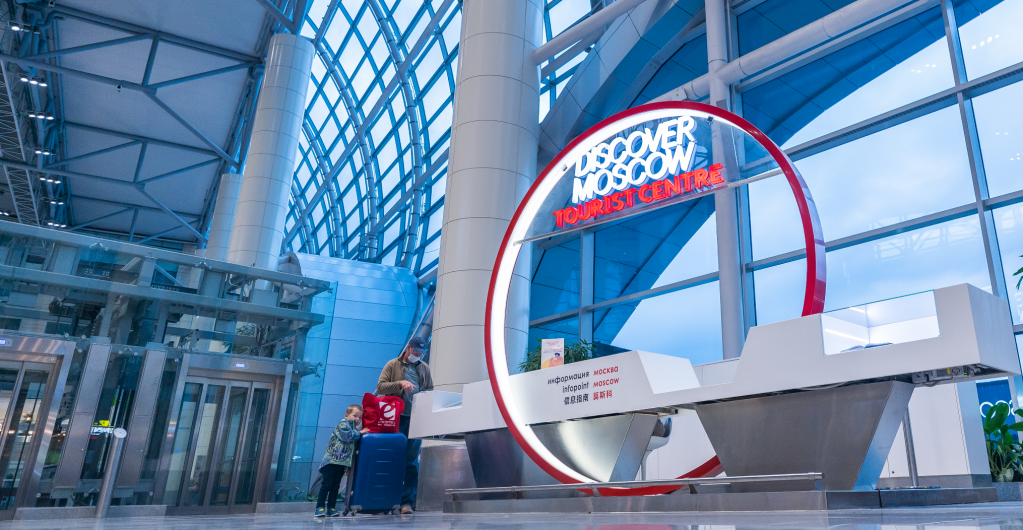
ABOUT US more
Projects more.
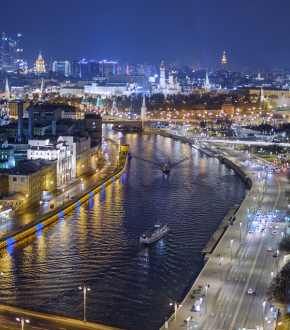
Digital travel service RUSSPASS
An innovative travel planning service.
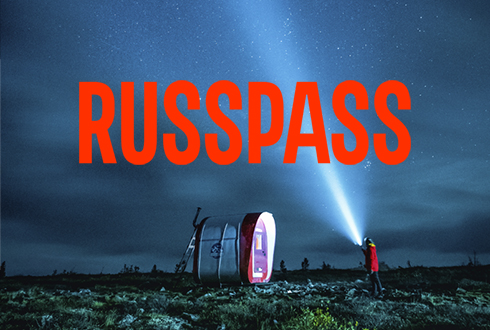
Moscow City Tourism Committee concludes its first-ever digital roadshow in India to a resounding success
The 4-day panned virtual event was specially curated to present the “City of Moscow” as an attractive travel destination to the vibrant Indian outbound travel fraternity spread across 15 major cities PAN India.

Moscow tops the main category at World Travel Awards
Moscow wins in two categories of world travel awards europe, dear moskvichi: 10 stories about moscow told by its citizens.
The main component of each city is its residents. Moscow City Tourism Committee is launching Moskvichi, a special project that aims at showcasing the city through its residents' stories.
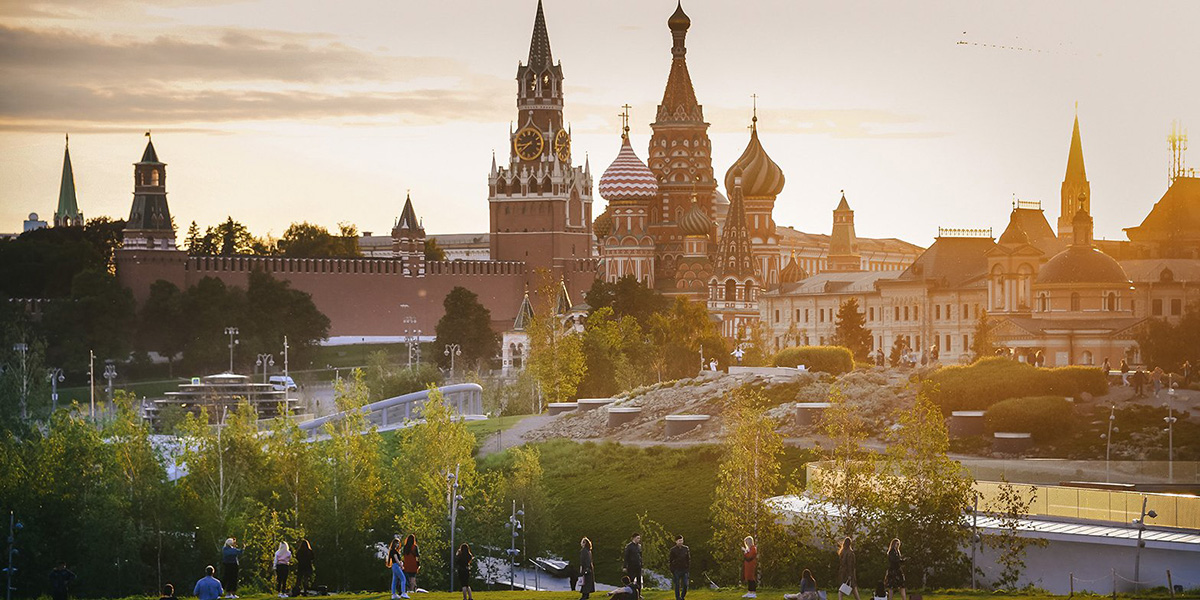
Sergey Sobyanin proposed voting for Moscow at the World Travel Awards
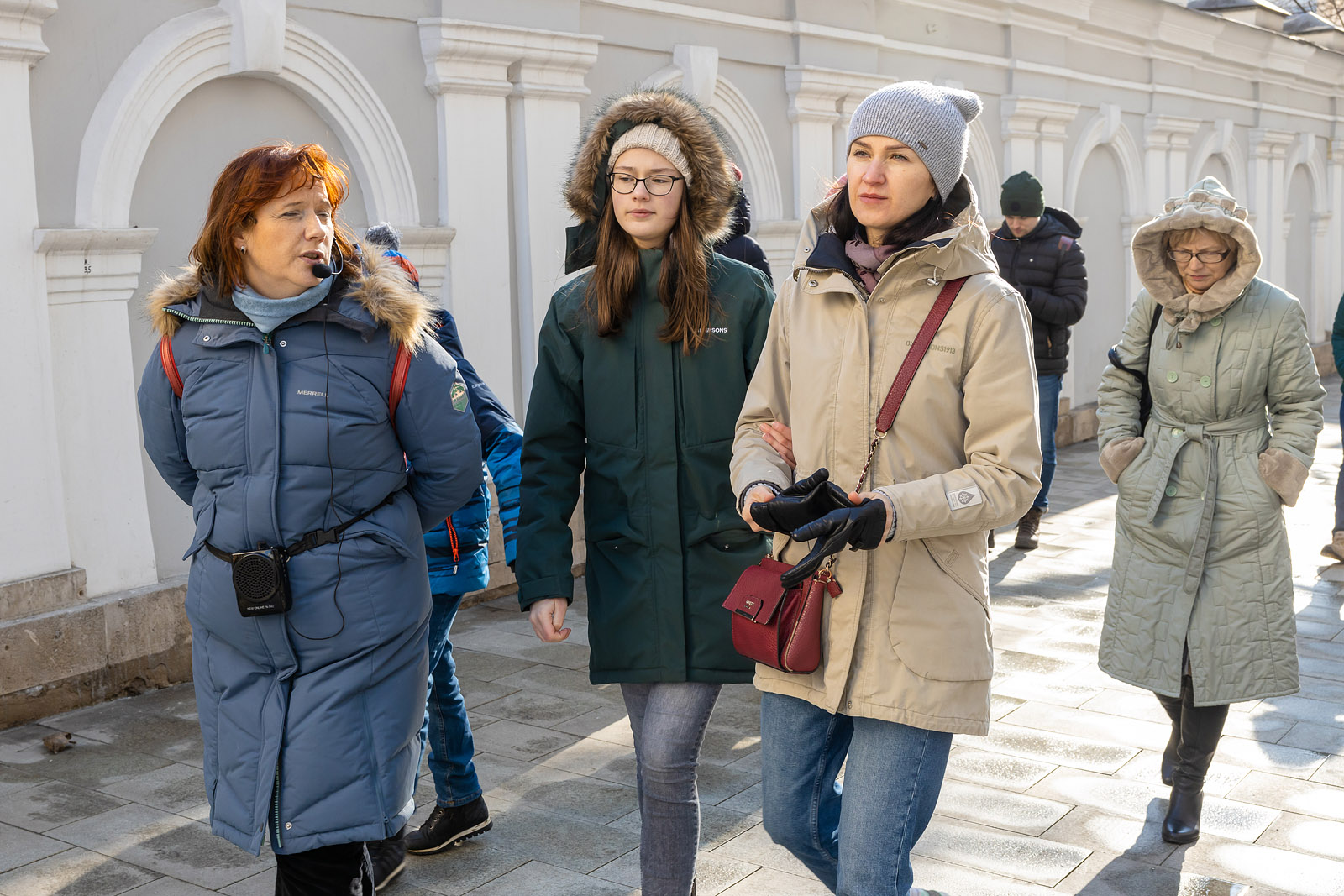
Natalya Sergunina: City tours in honour of International Tourist Guide Day attracted over 3,500 visitors
Natalya sergunina: five moscow hotels were included in the annual forbes travel guide star award ranking.
For the first time, the Four Seasons Hotel Moscow, opened in 2014, was awarded the highest 5-star rating. In addition, the 4-star rating was awarded to Lotte Hotel, The Ritz-Carlton, and Ararat Park Hyatt in Moscow. The “Recommended” rating was awarded to The St. Regis Nikolskaya Hotel in Moscow.

#valentines: romantic photography locations in Moscow

Over 15 Thousand People Visit Tourist Information Centre During Journey to Christmas Festival
Moscow restaurant listed in the russian book of records.
Birds, a restaurant with a panoramic view of Moscow, has set a record and become officially the highest restaurant and club in Europe. This fact has been registered in the Russian Book of Records. The restaurant is located in Moscow-City (MIBC).

Business meetings, VR travels, and the iconic Moscow ice cream: FITUR tourism trade fair recap

More than 500 people have applied to participate in the Moscow Travel Hack
Moscow to take part in major international tourism trade fair in madrid.
FITUR Madrid 2020 will be the first international event this year where Moscow will present its tourism potential. It will be held from 22 to 26 January.


IMAGES
VIDEO
COMMENTS
tourism value chain, including host and source tour-ism markets; and proactive co-operation and collaboration across all tourism stakeholders to create business models to deliver sustainable tourism experiences. Numerous examples of innovation and leadership exist and provide evidence of success and proof-of-concept models that can be replicated.
Cape Verde receives close to 1 million Tourists annually looking for "Beach Tourism". Biodiversity: Cape Verde is the 3rd largest turtle spawning site on our planet, is the 11th Global Hotspot for Terrestrial and Marine Biodiversity and is considered one of the 23 Marine Ecoregions of Global Importance for Biodiversity for the high rate of ...
PDF | On Mar 7, 2017, Felicity Picken published Beach Tourism | Find, read and cite all the research you need on ResearchGate
Conclusion. As we conclude this comprehensive guide, the ongoing need for responsible beach tourism is evident. Balancing the joys of coastal exploration with the imperative to protect these paradises requires a collective commitment to responsible practices. Encourage a shift towards sustainable travel habits.
Regrowing mangroves provides ample natural protection for shorelines. ( Learn why Miami is planting mangroves to save its coastline .) Planting with purpose: West Palm Beach, Florida, now requires ...
Inside Andrew Tan's $720 million eco-tourism project in the country's pristine beachside paradise. ... steep karst cliffs and the longest white sand beach in the Philippines, Megaworld has a 15 ...
Severe beach erosion, induced by climate change, had dealt a major blow to Saly, the jewel in Senegal's tourism crown. With the help of the World Bank, a major effort on beach restoration and coastal protection has helped revive Saly's tourism industry and fishing communities. Senegal is particularly vulnerable to rising sea levels and storm surges, with 700 kms of coastline along the ...
The beach harmonization project doesn't address beach driving, a hot-button issue for some. One side advocates for more environmental conservation and erosion prevention — things taxpayers are ...
The sudden outbreak of COVID-19 has led beach tourism to a complete halt in January 2020, disrupting millions of livelihoods and businesses. Due to the economic importance of beach tourism, many governments reopened tourist beaches after the number of confirmed cases decreased. ... Social Science Planning Project in Shandong Province (No ...
The upcoming project is one of three major beach renourishment efforts expected to begin in 2025, Strayer said. The U.S. Army Corp of Engineers large-scale dredging of the Palm Beach Inlet also is ...
Bahrain is hoping a $427 million waterfront development project will establish the country as a beach-holiday destination. ... In 2019, the Bahraini tourism sector grew 6.8%, ...
The economic importance of beach tourism for many destinations has led many governments to reopen tourist beaches, as soon as the number of infection cases decreased. The objective of this paper is to provide a scientific basis for understanding the key issues for beach tourism management in these circumstances. These issues include risk ...
The government has pledged to crack down on rapid development, and on seaside businesses seeking to take advantage of a tourist boom. But some residents and conservationists are unimpressed.
The project was cancelled, and as a result, SOS Puerto became a recognised voice for the community. Today, it has roughly 14,000 followers on Instagram - impressive numbers considering the town ...
Project schedule Ongoing; This special area plan sets forth a series of strategies for the revitalization of Clearwater Beach in six major areas: land use, mobility, off-street parking, catalytic projects, economic feasibility and financing, and design guidelines. ... Clearwater Beach is both a world famous tourist destination and home to more ...
The world tourism industry total financial involvement of travel and tourism to GDP global 2006-2019 is 9258 billion U.S. dollars and it's also a favorable economic environment world GDP is +3.6 % ...
Awaji Yumebutai. Japanese architect Tadao Ando's most ambitious project, Awaji Yumebutai covers an area of 2.3 million square feet, and had been used to obtain landfill for the Kansai ...
A beach nourishment project results in a shoreline perturbation (Fig. 2), which under wave action, will spread out along the shoreline (Dean, 2002; Elko and Wang, 2007).Engineering and economic elements of beach nourishment projects considered in this study include the sand volume (in cubic yards, cy), the length of the project (in linear feet, lf) (Fig. 2), and the total project cost (U.S ...
The Space Coast Office of Tourism began a multi-year project in Lori Wilson Park in mid-2020 to refurbish many areas that needed refreshing and updating. The 32-acre park in Cocoa Beach hosted ...
On April 15, Derby Destination announced "The Derby Shores," a 4.5-acre, $160 million project in partnership with Crystal Lagoons. The Derby Shores will have a public access inland ocean.
The proposed Shamuka Beach Project, touted as India's largest coastal tourism project is set to come up in 3,000 acres of land at Sipasarubali , an administrative area consisting of around twenty villages, located roughly 10km south of Puri town, composed of mainly landless poor. In 1994, the Odisha High Court directed the state to distribute 214 acres and another 33 acres of ceiling surplus ...
The University City District is planning to build a new public pool, beach and entertainment hub on the Schuylkill River in West Philly.. Why it matters: The project could transform a humdrum stretch of Schuylkill Avenue near 30th Street Station into a destination. Driving the news: The $60 million project would span across two decks in the shadow of the grand former post office building ...
2023-08-26 - BY NONOY LACSON. ZAMBOANGA CITY — The Department of Tourism through the Tourism Infrastructure and Enterprise Zone Authority has allotted P106 million to fund the Ladol Beach Tourism Development Project in Alabel town in Sarangani province. DoT-12 Director Nelia Arina, Governor Rogelio D. Pacquiao, Congressman Steve ...
In lieu of initiating individual projects, property owners are strongly encouraged to allow the County to install erosion control measures that have been permitted and designed to work together. To notify the CMA team, call (727) 479-5564. Provide your name, a description of the work and the address where the work will occur.
Saudi Arabia hasn't been shy about its tourism aspirations, claiming it aims to attract between 100 million and 150 million visitors by 2030. However, Dubai is a formidable competitor.
This grant program was suspended for the 2023-24 budget year, as a result of the expenditure of all tourist-tax-generated beach funds in order to repair the South Beaches because of damages from ...
ANO «Project Office for the Development of Tourism and Hospitality of Moscow» The Tourism Committee, or Mostourism, is the executive body of the Moscow City Government that oversees tourist activities in the capital. The Committee is responsible for legislative initiatives, congress and exhibition activities, and event and image projects.
Meshcherskaya Recreation Area. Beloye Lake. Beach Club. Shkolnoye Lake. 1. Troparyovo. Image Source. Troparyovo is a small beach which is located in the large grounds of the Troparyovsky Forest Park. This beach is one of the favorite Russian beaches in Moscow among local individuals.
ABOUT US more. We realize image projects and carry out different marketing events for developing tourism potential of Moscow in Russia and abroad. ANO «Project Office for the Development of Tourism and Hospitality of Moscow» was established by the Committee on Tourism of the city of Moscow in November 2018.
About us. We realize image and marketing projects for developing the city of Moscow as tourist and cultural center, implement initiatives for developing tourism potential of the capital in Russia and abroad as well as infrastructure projects. All this contributes to the growth of the tourist flow and the contribution of the tourism industry and ...